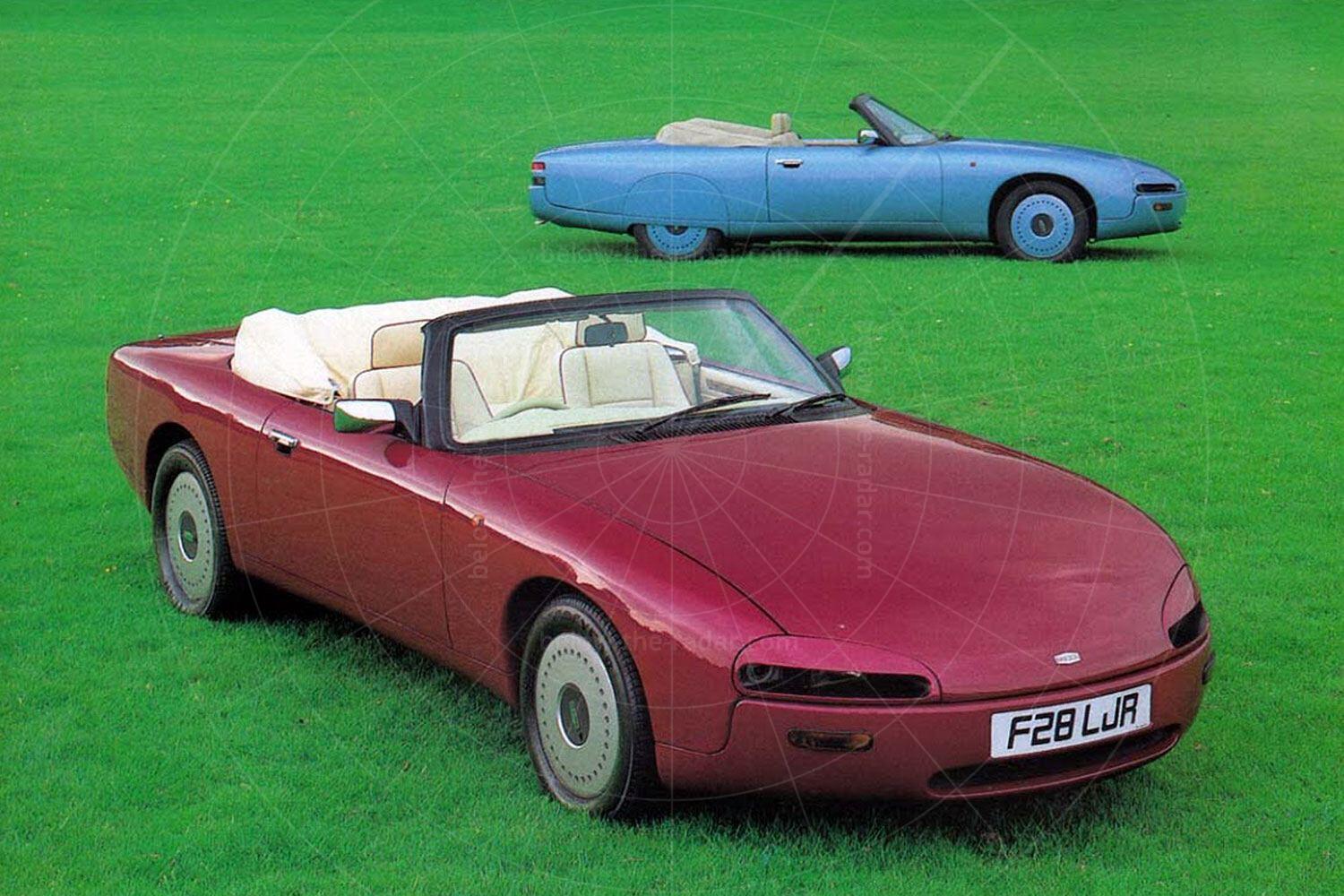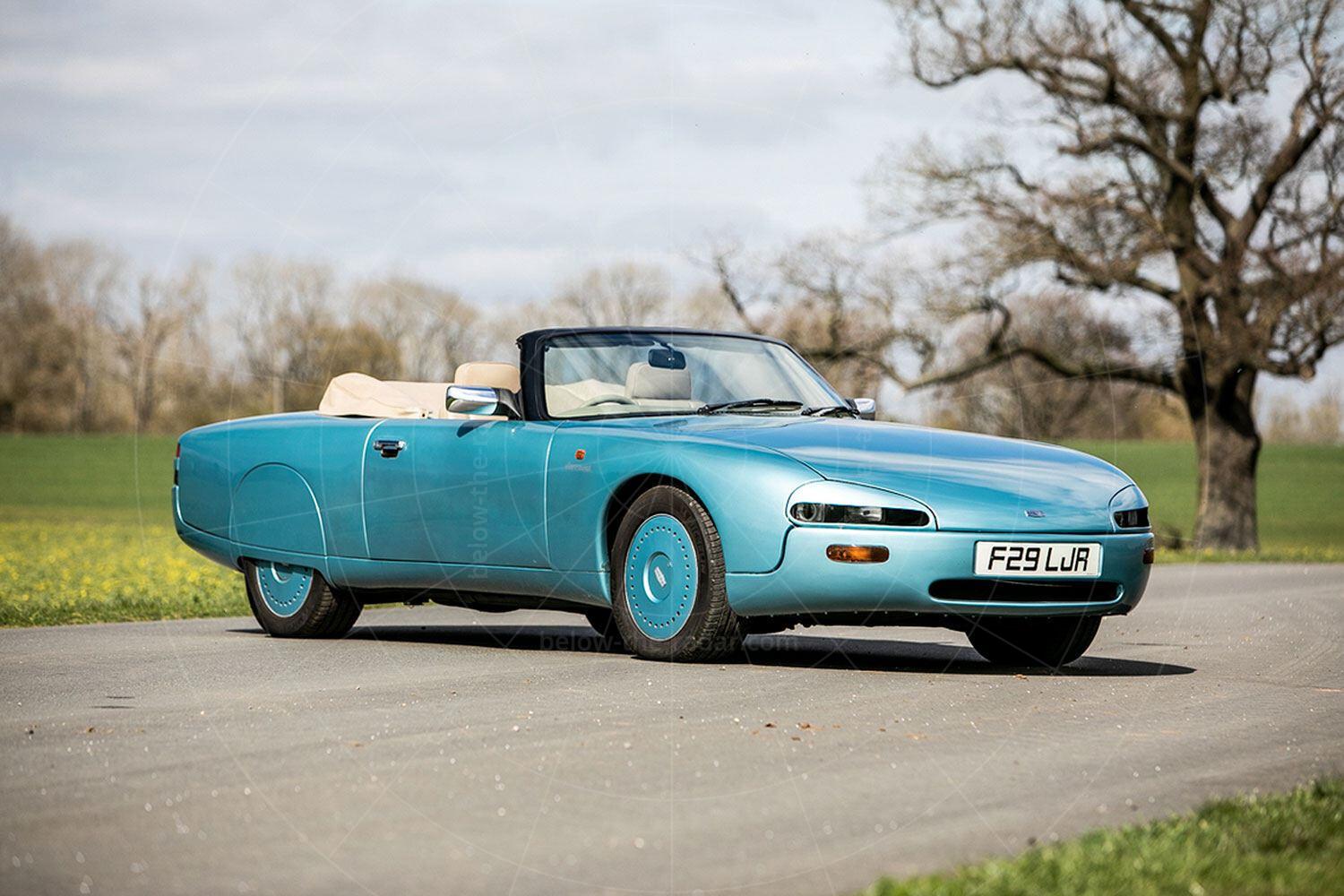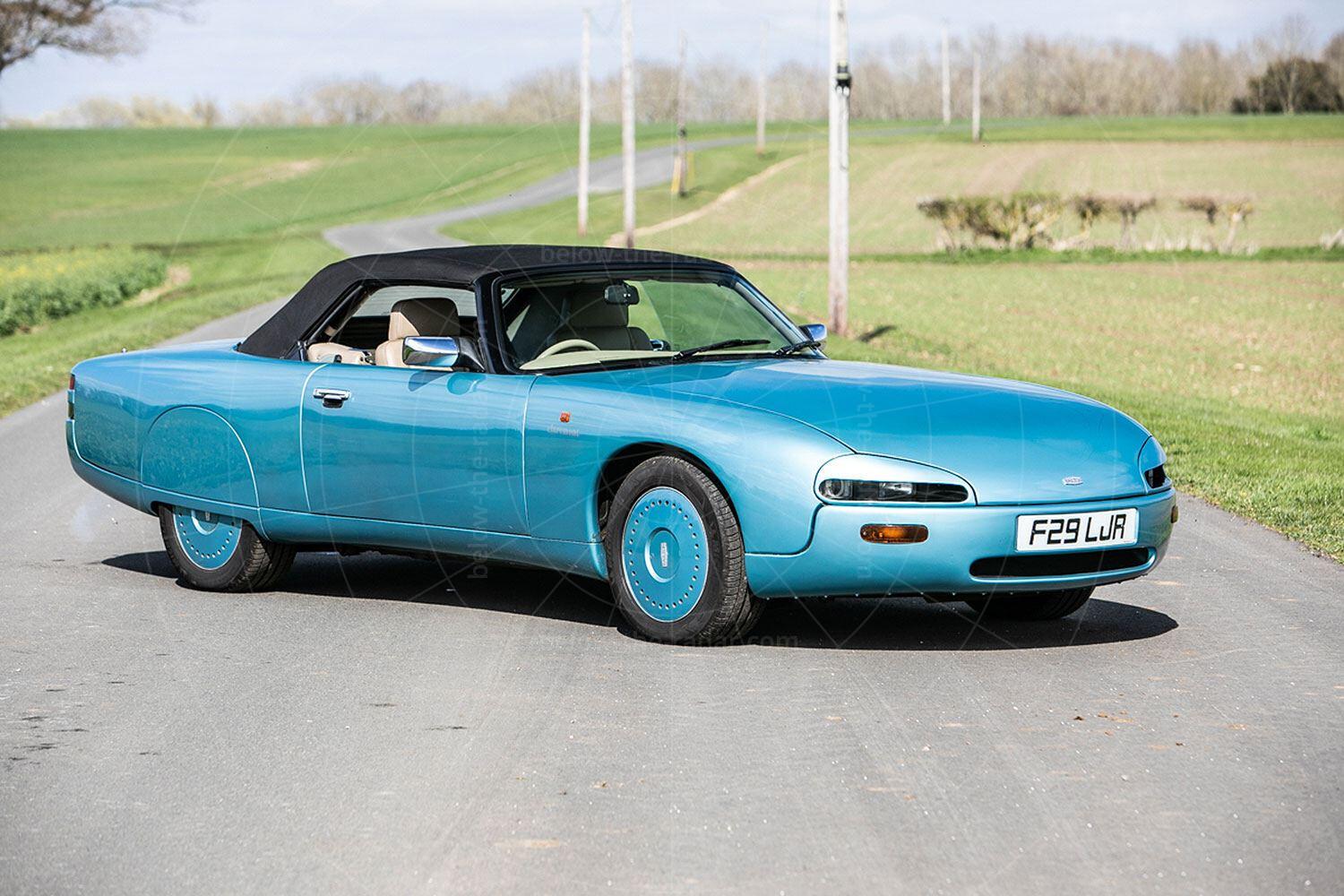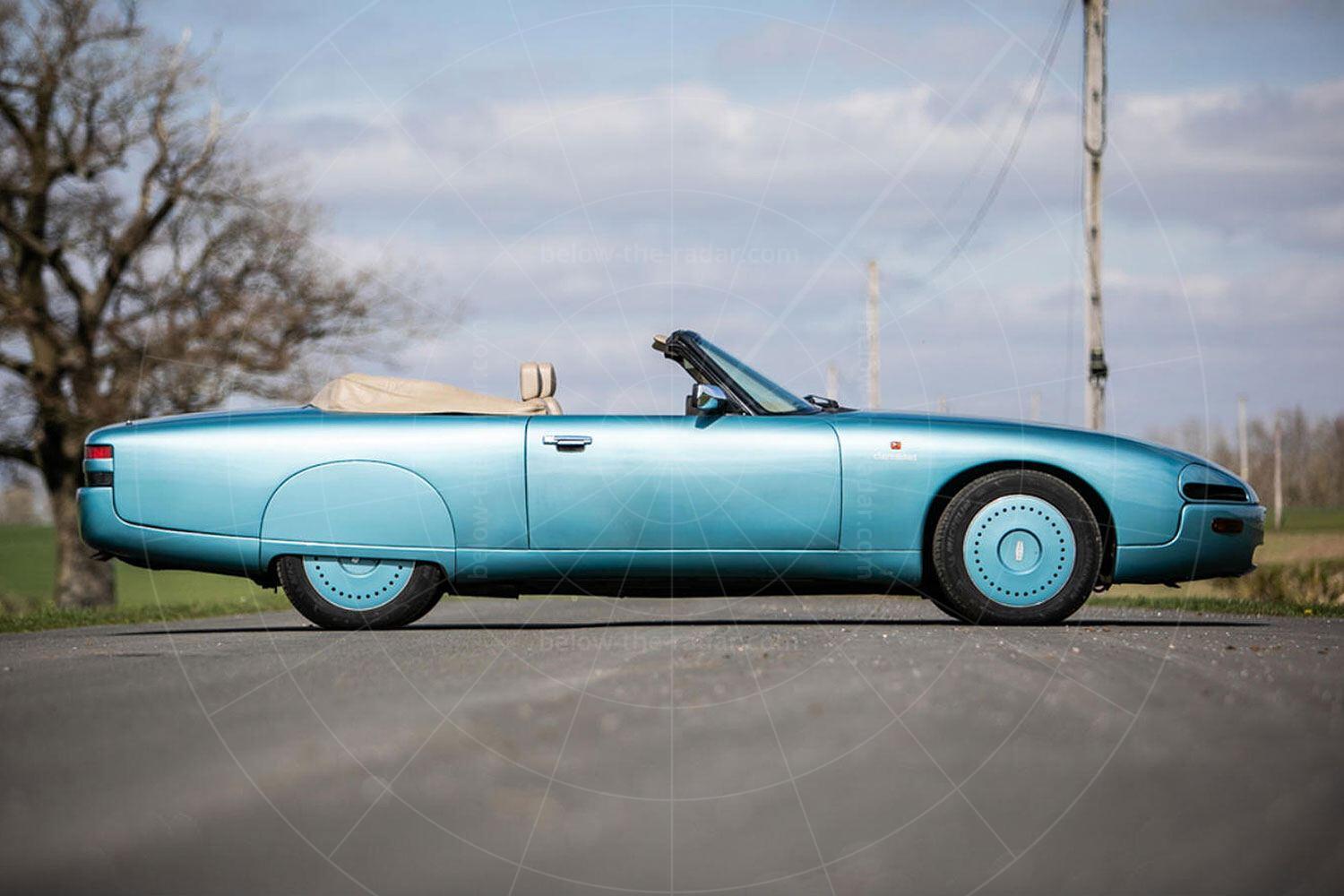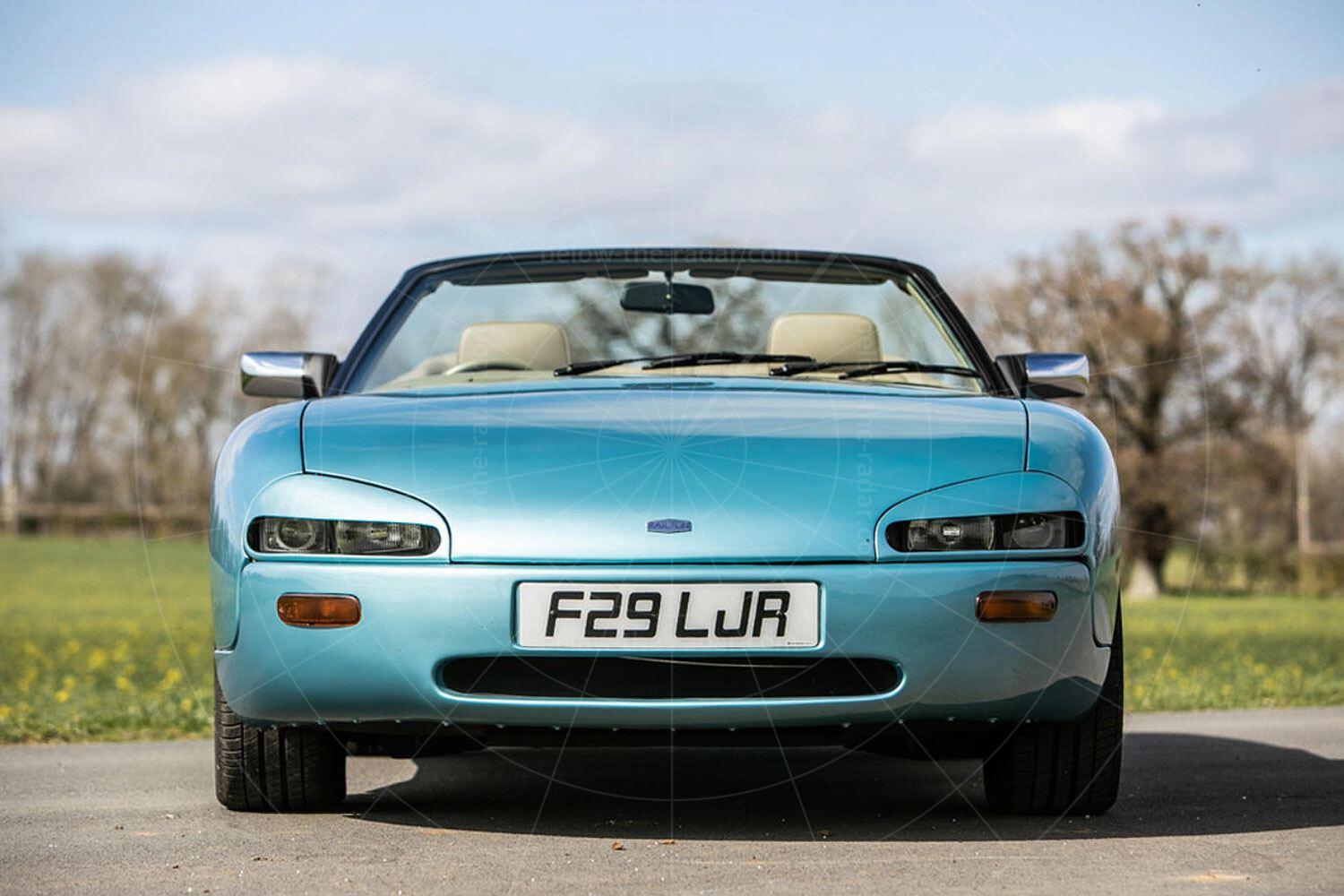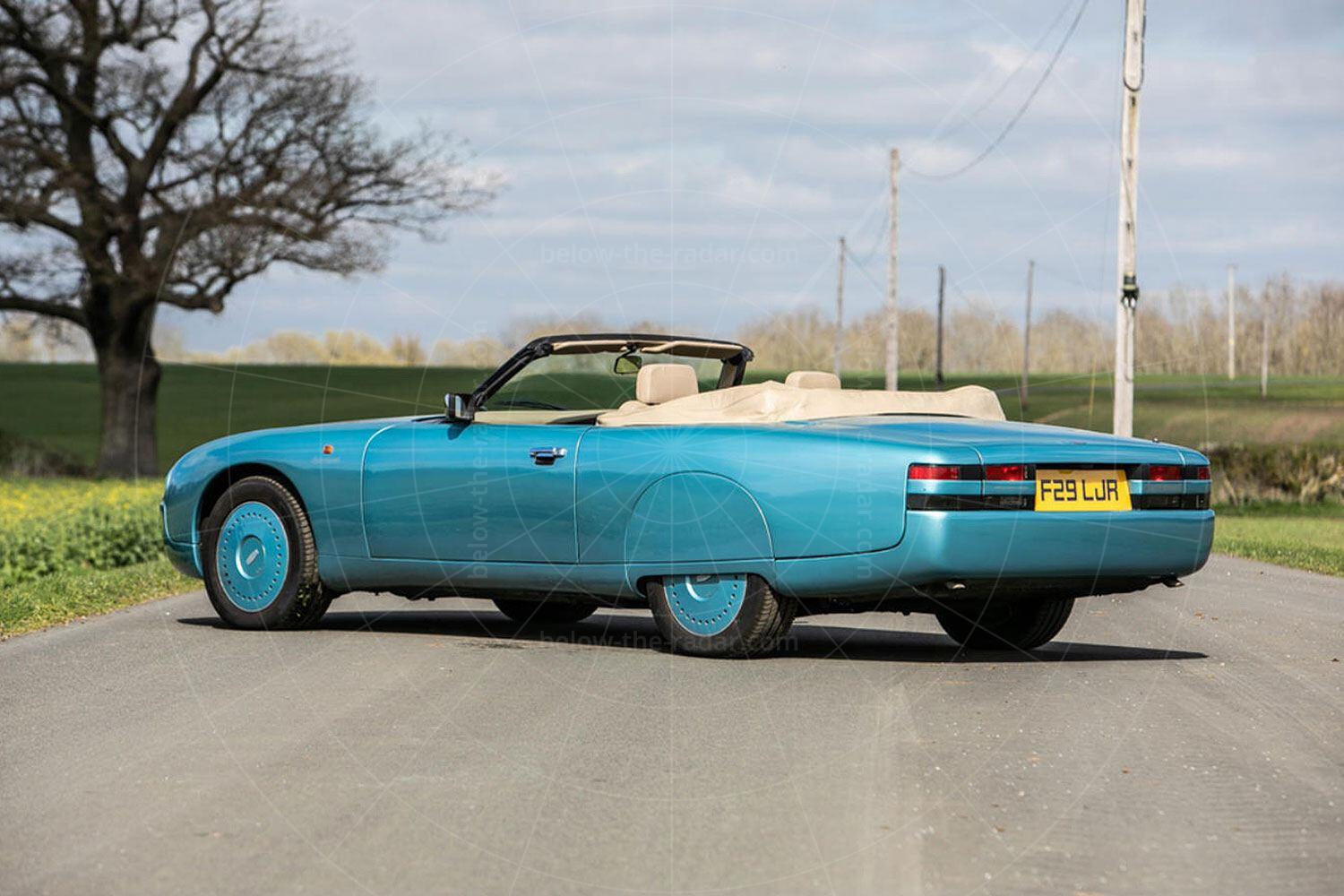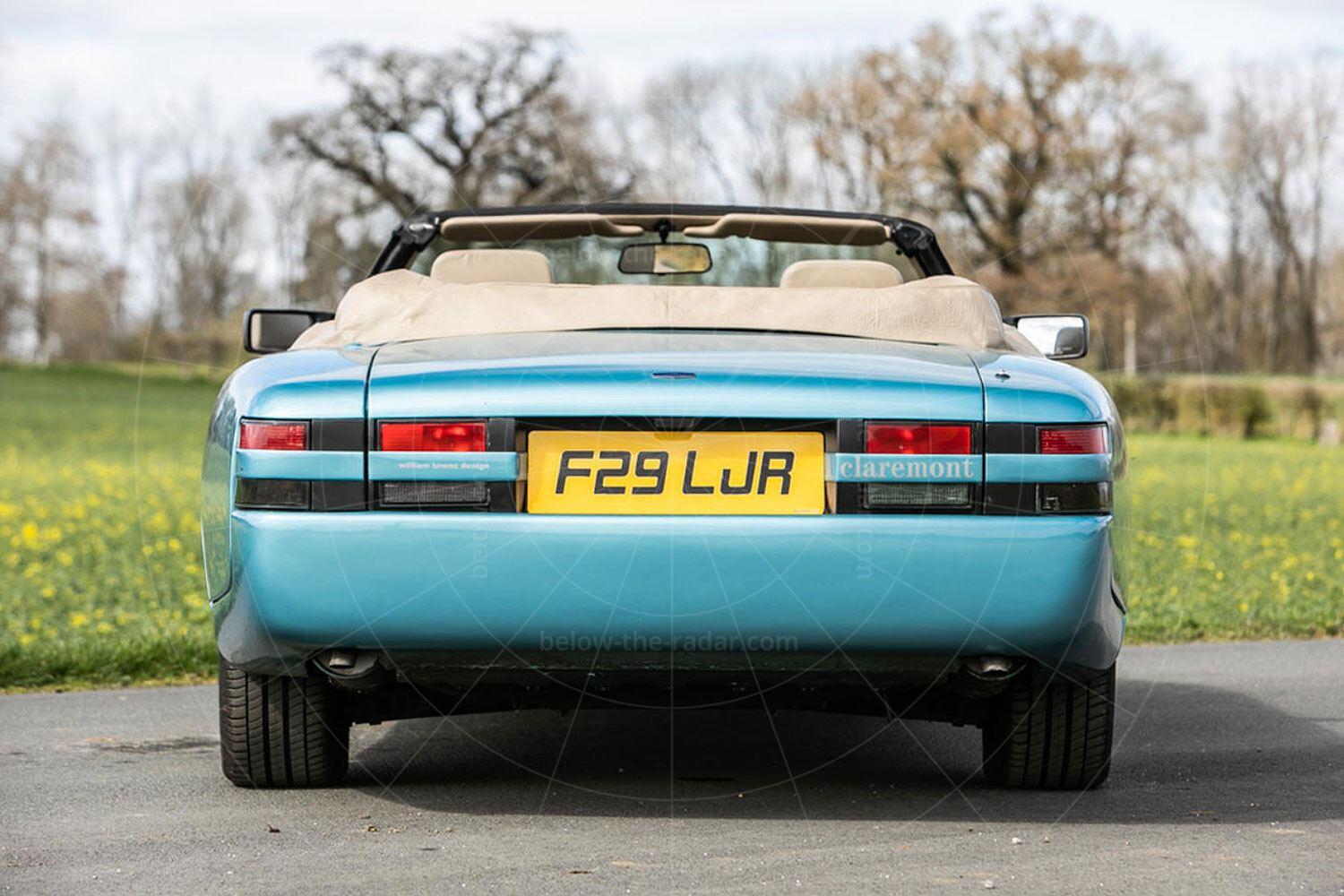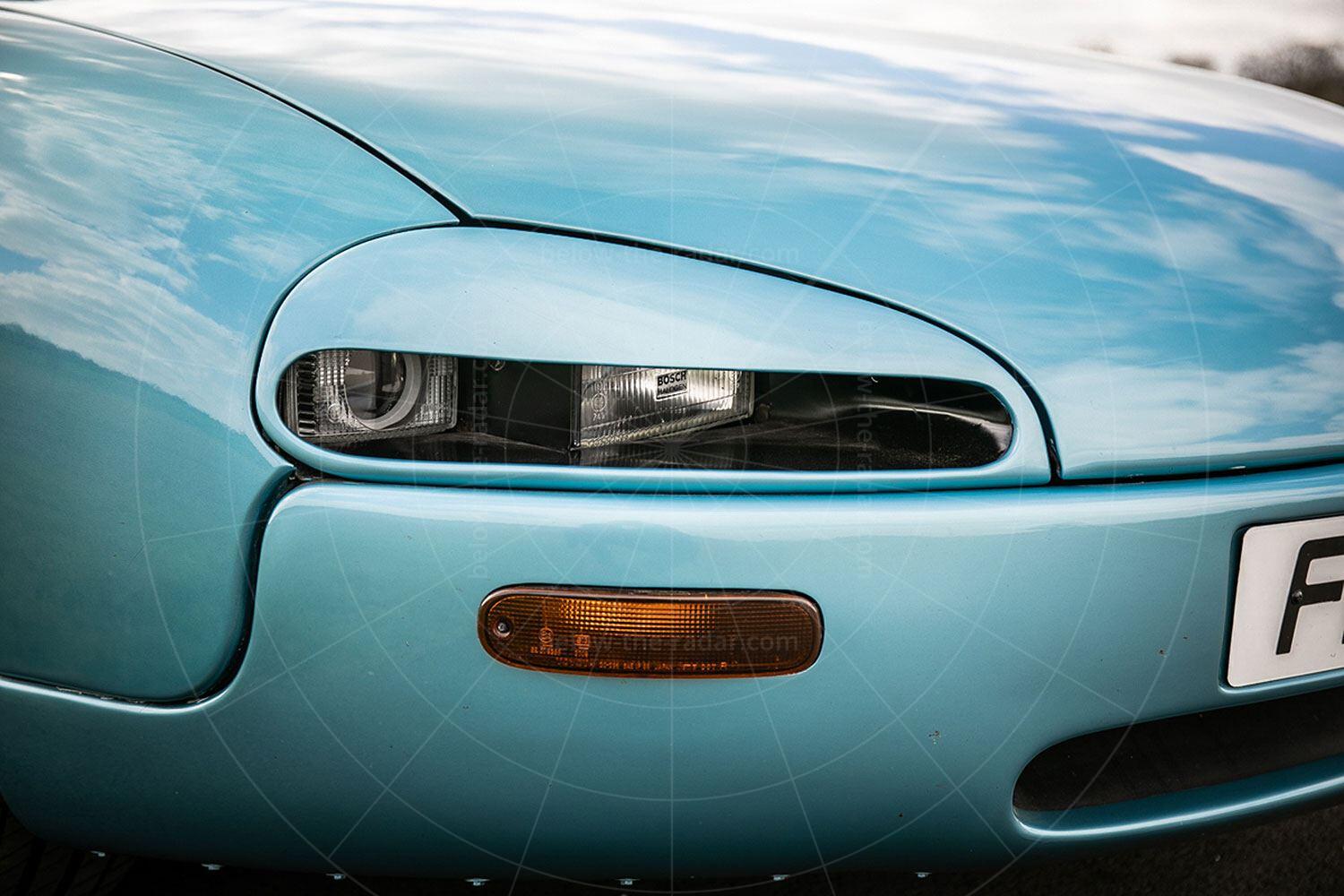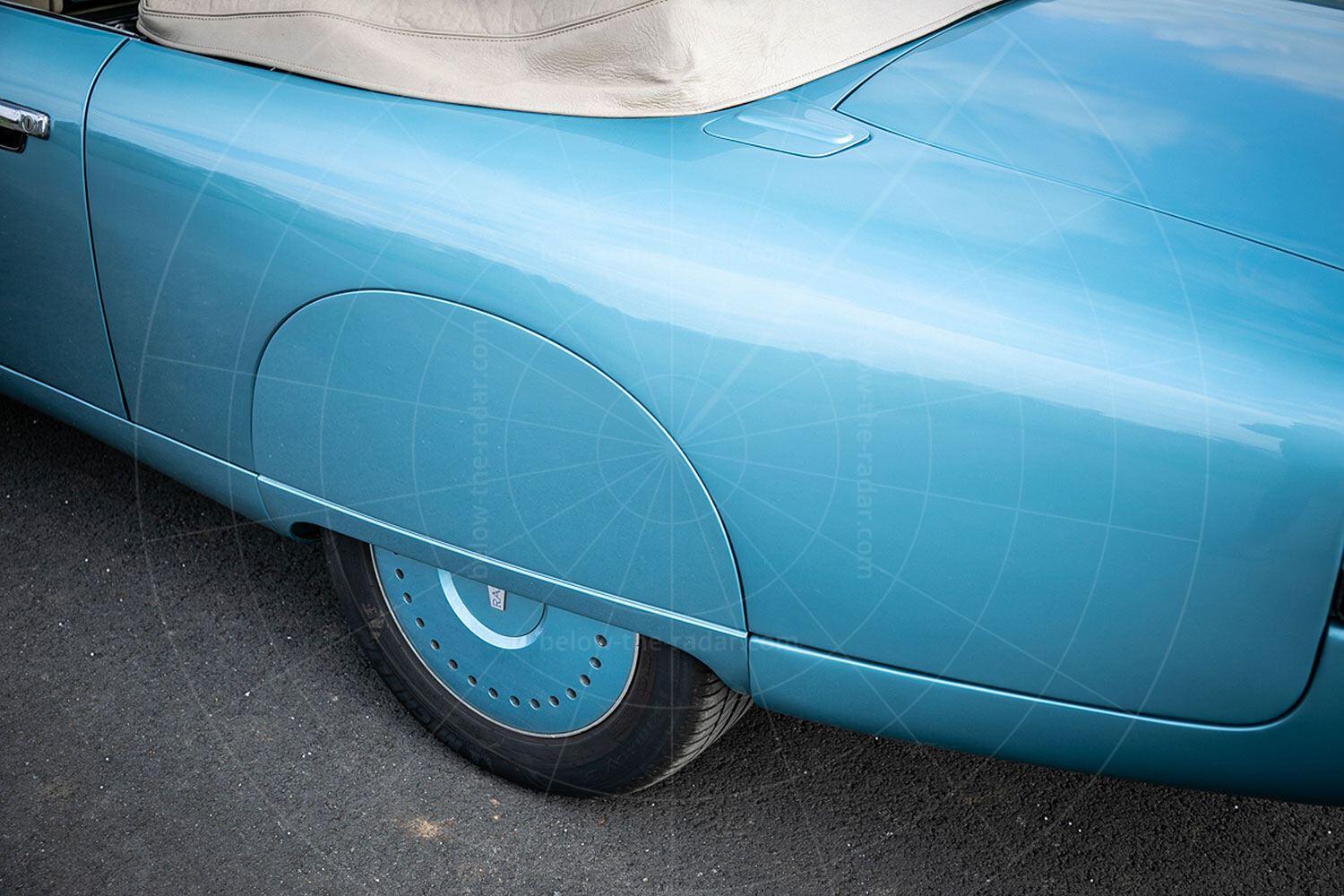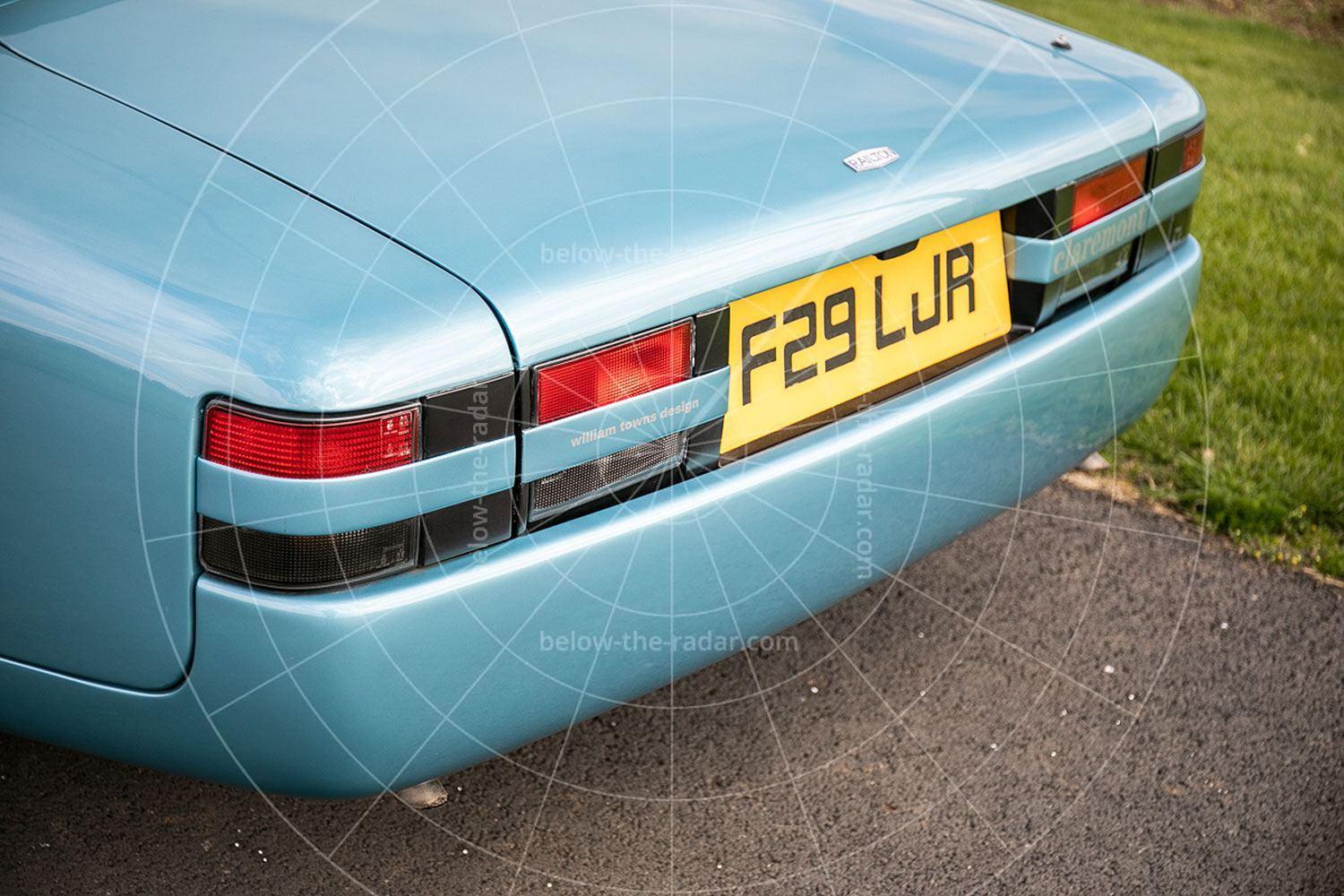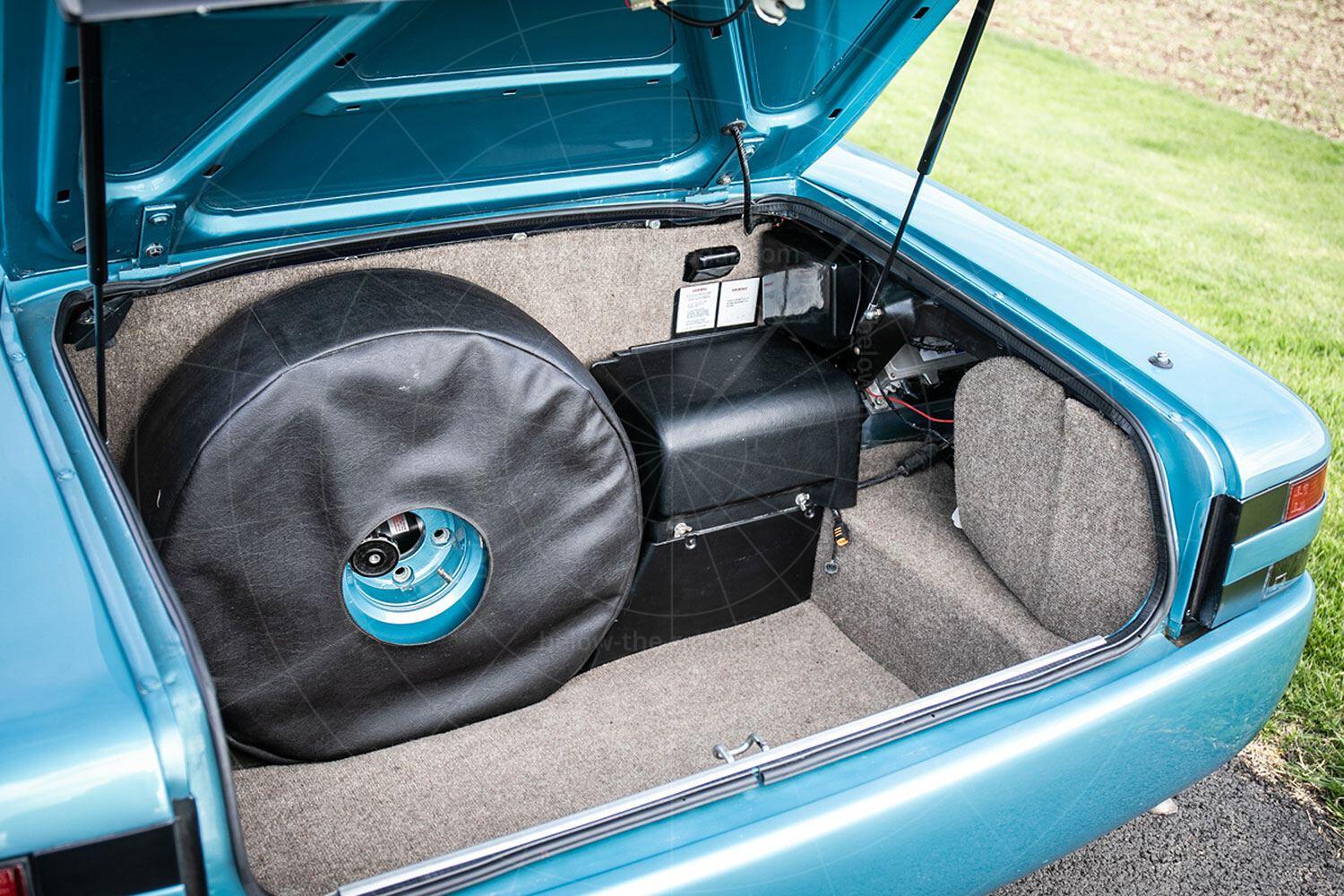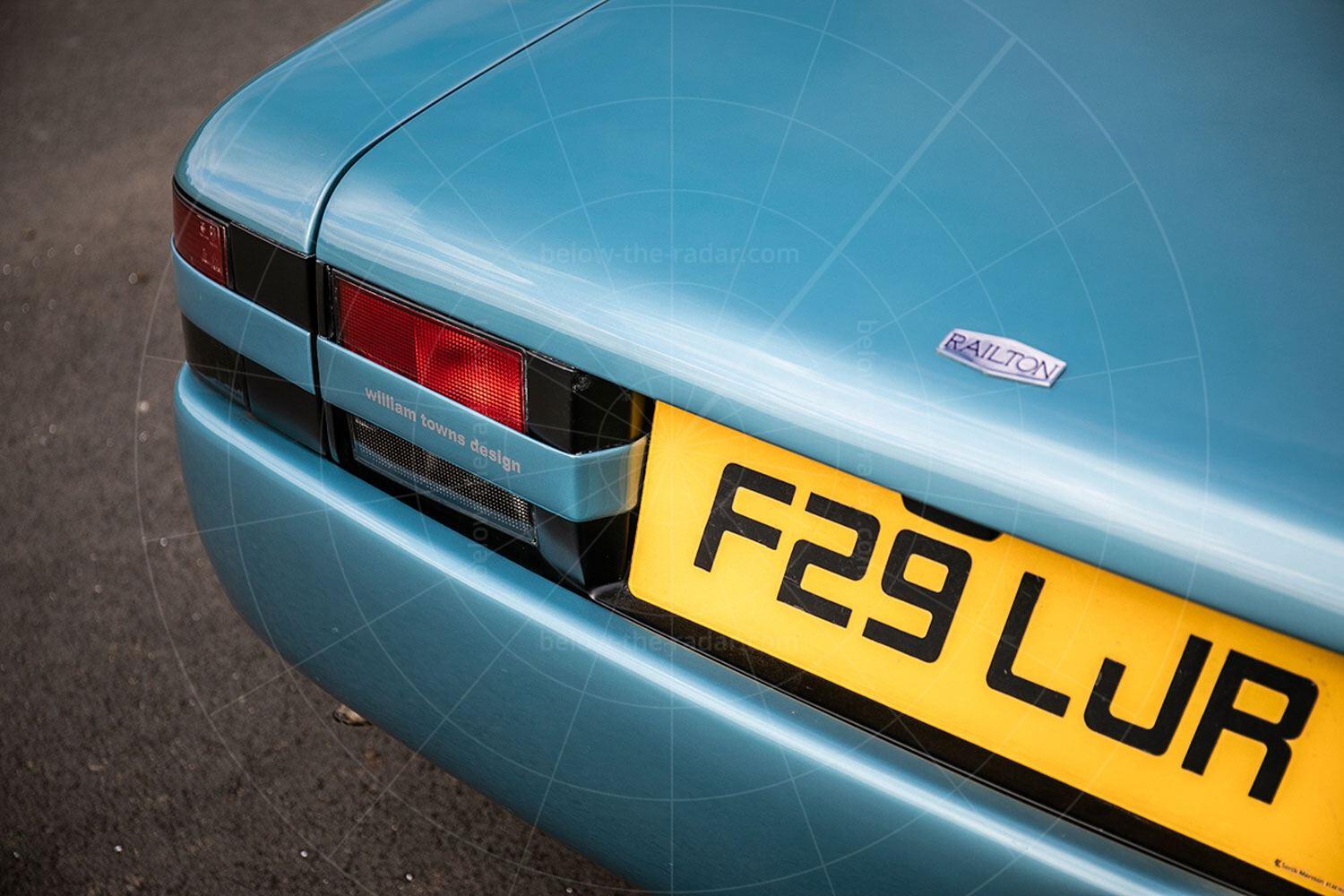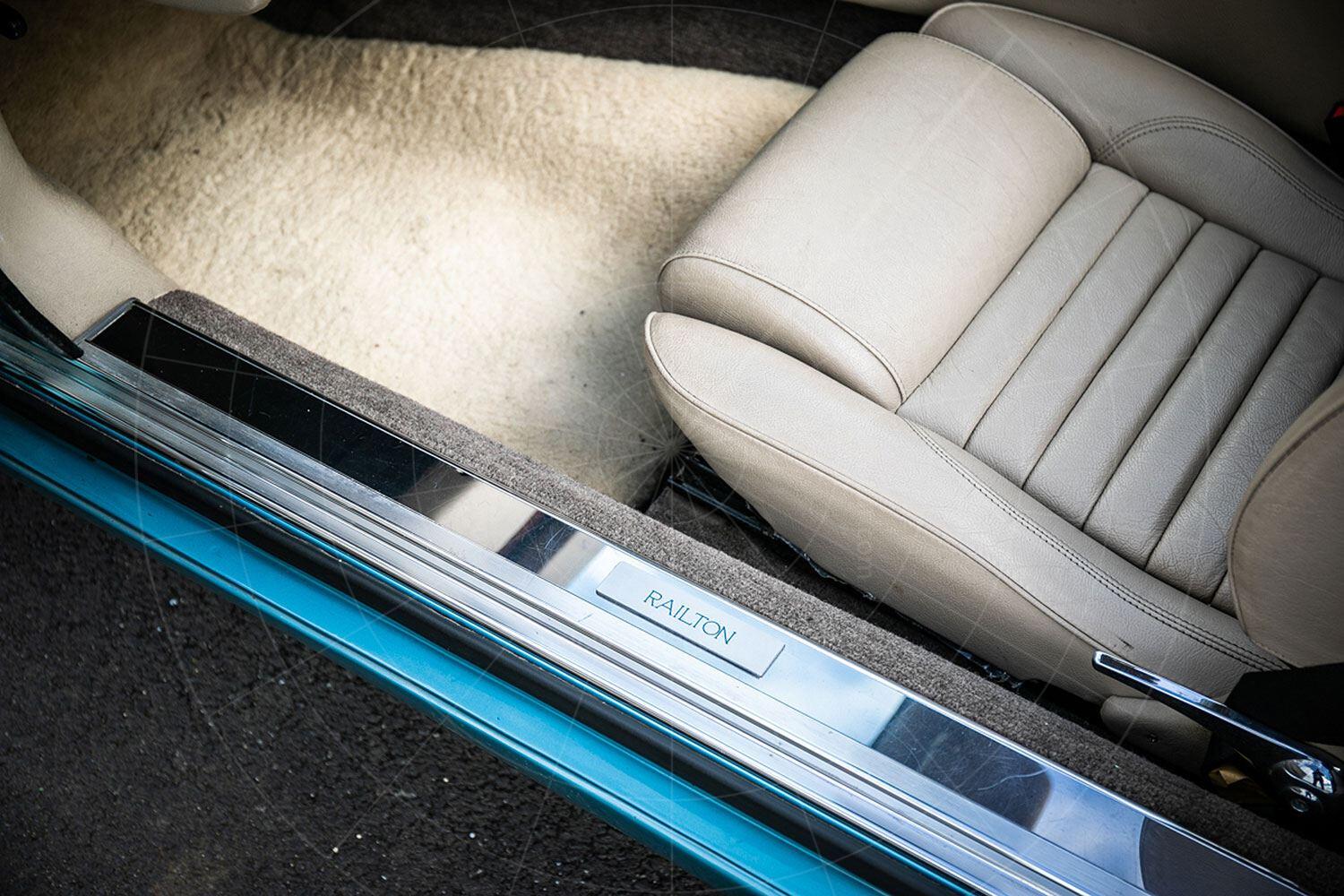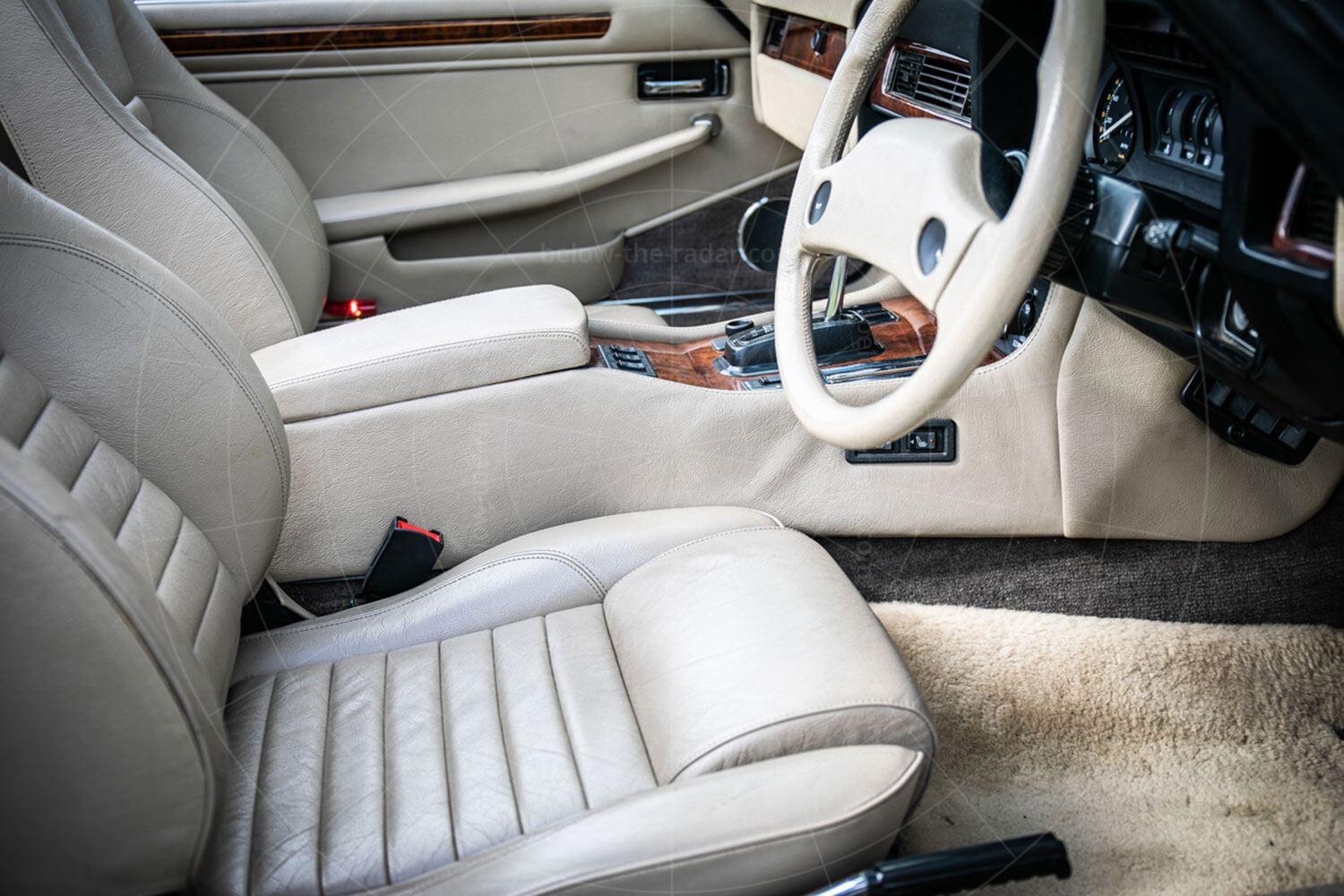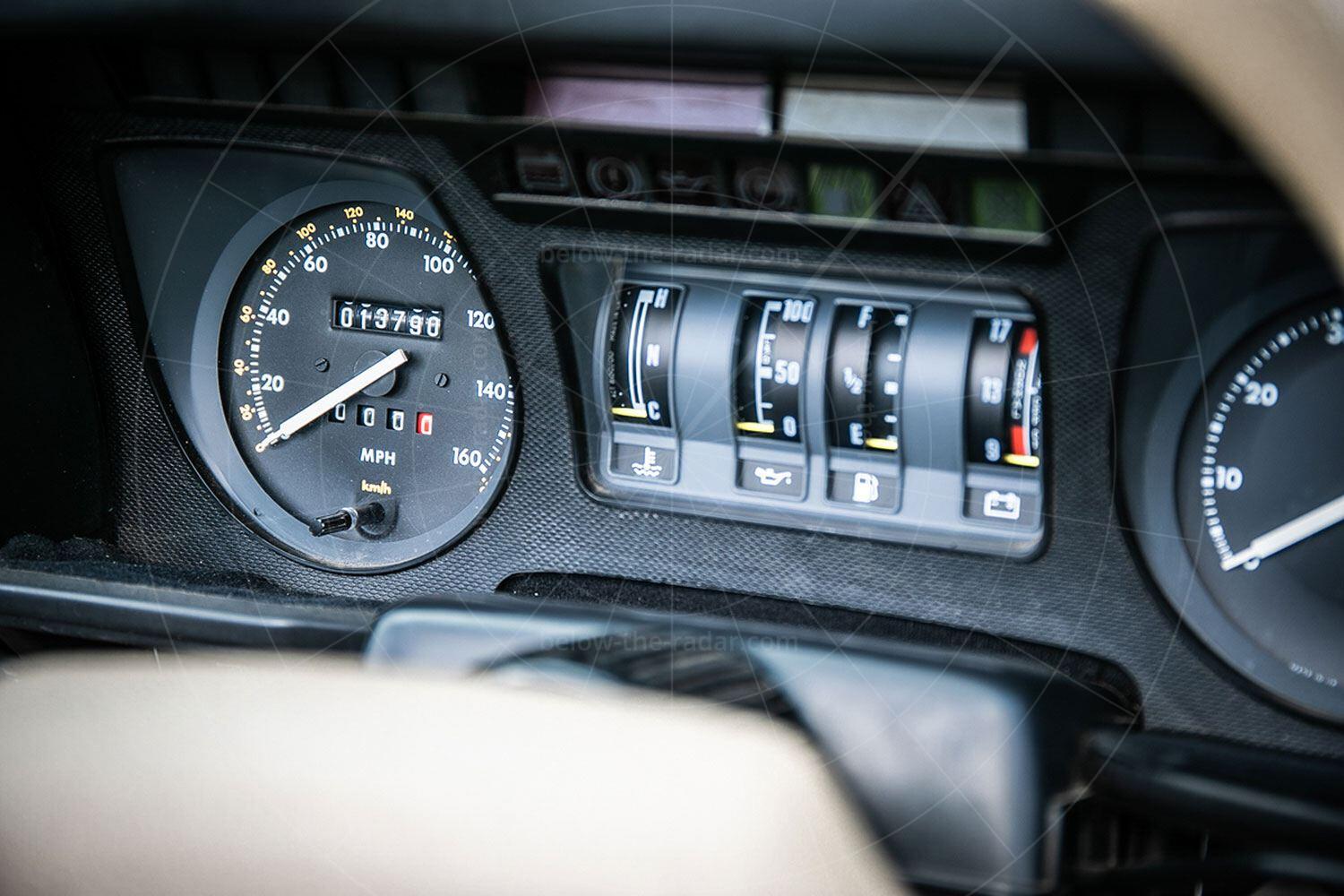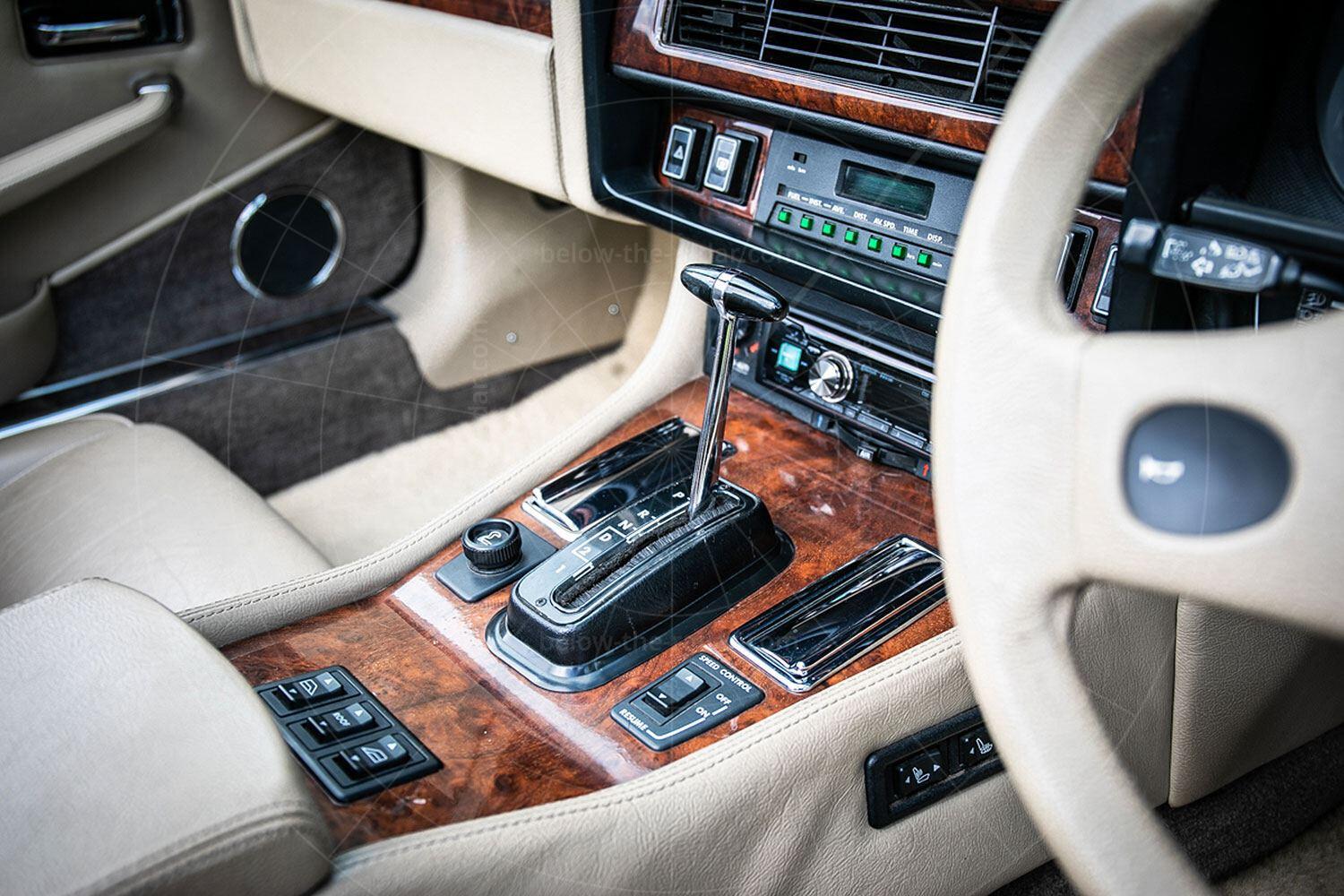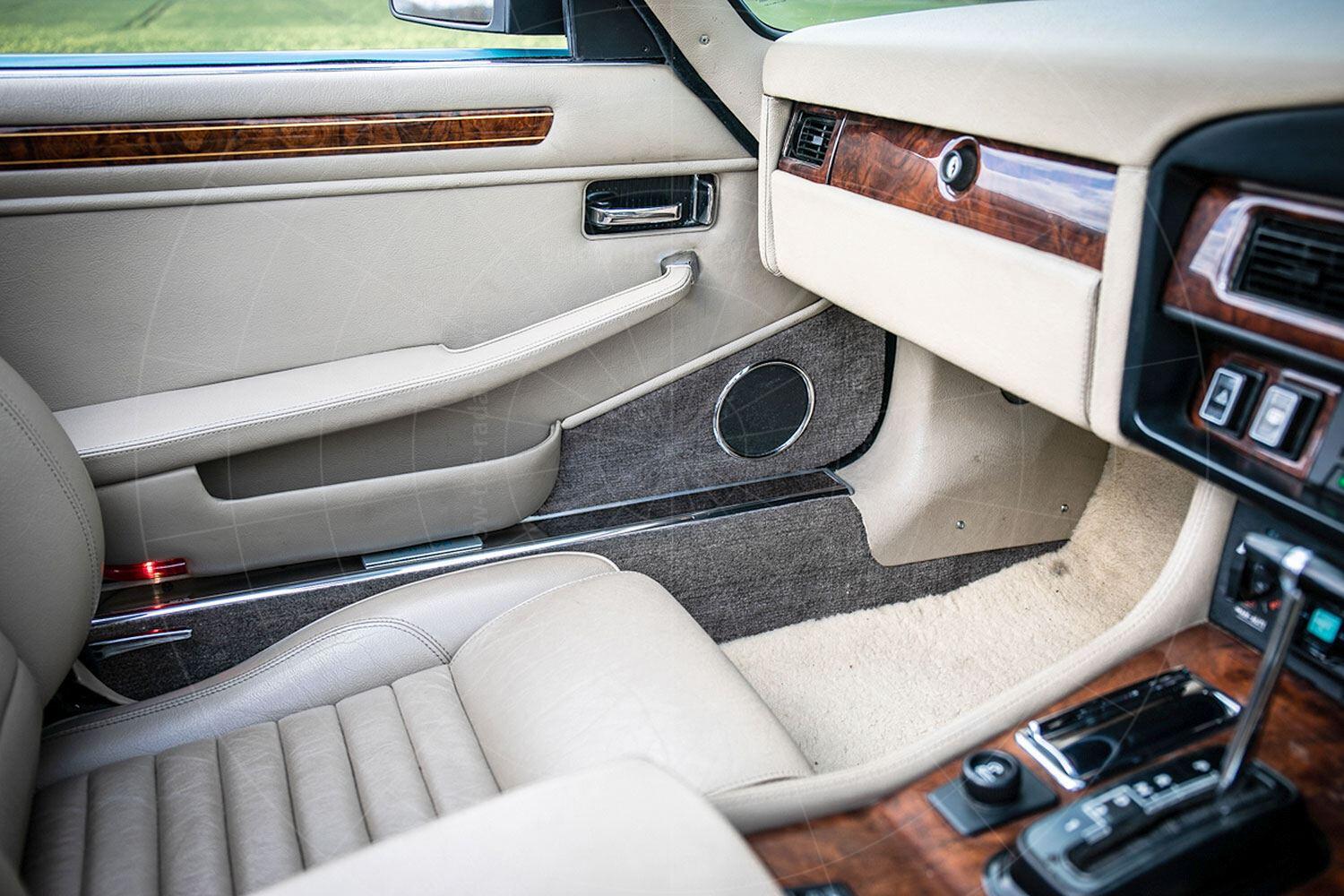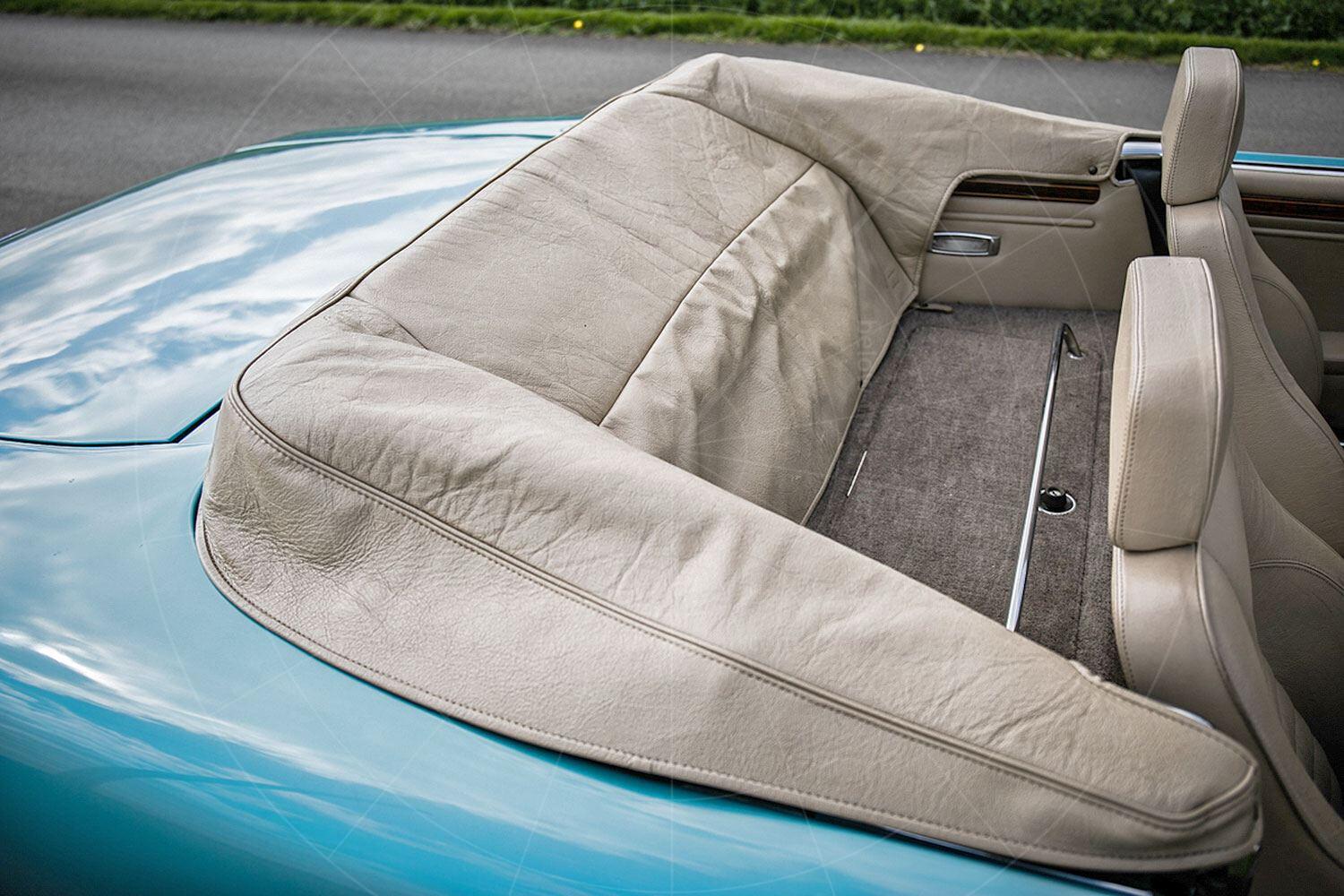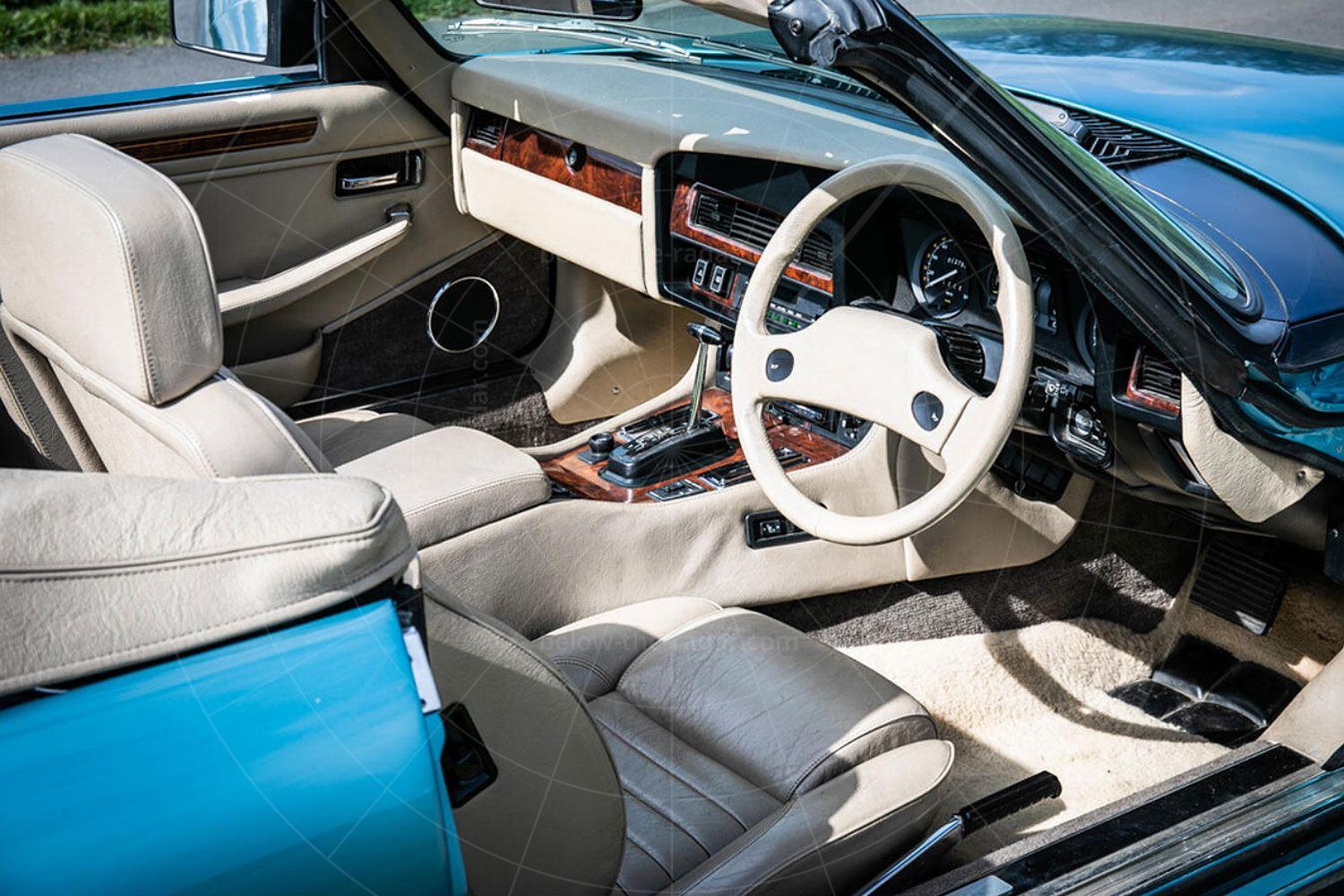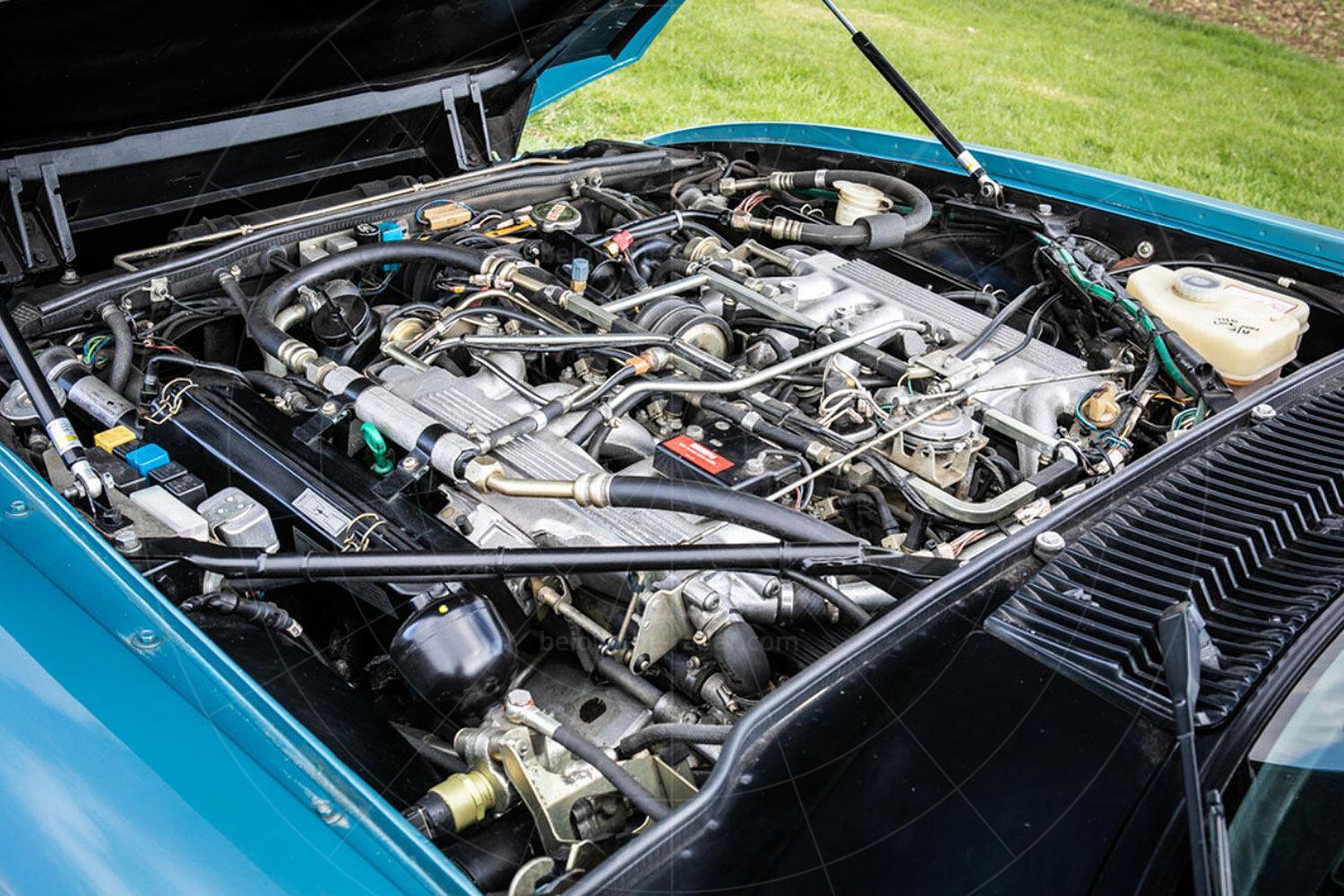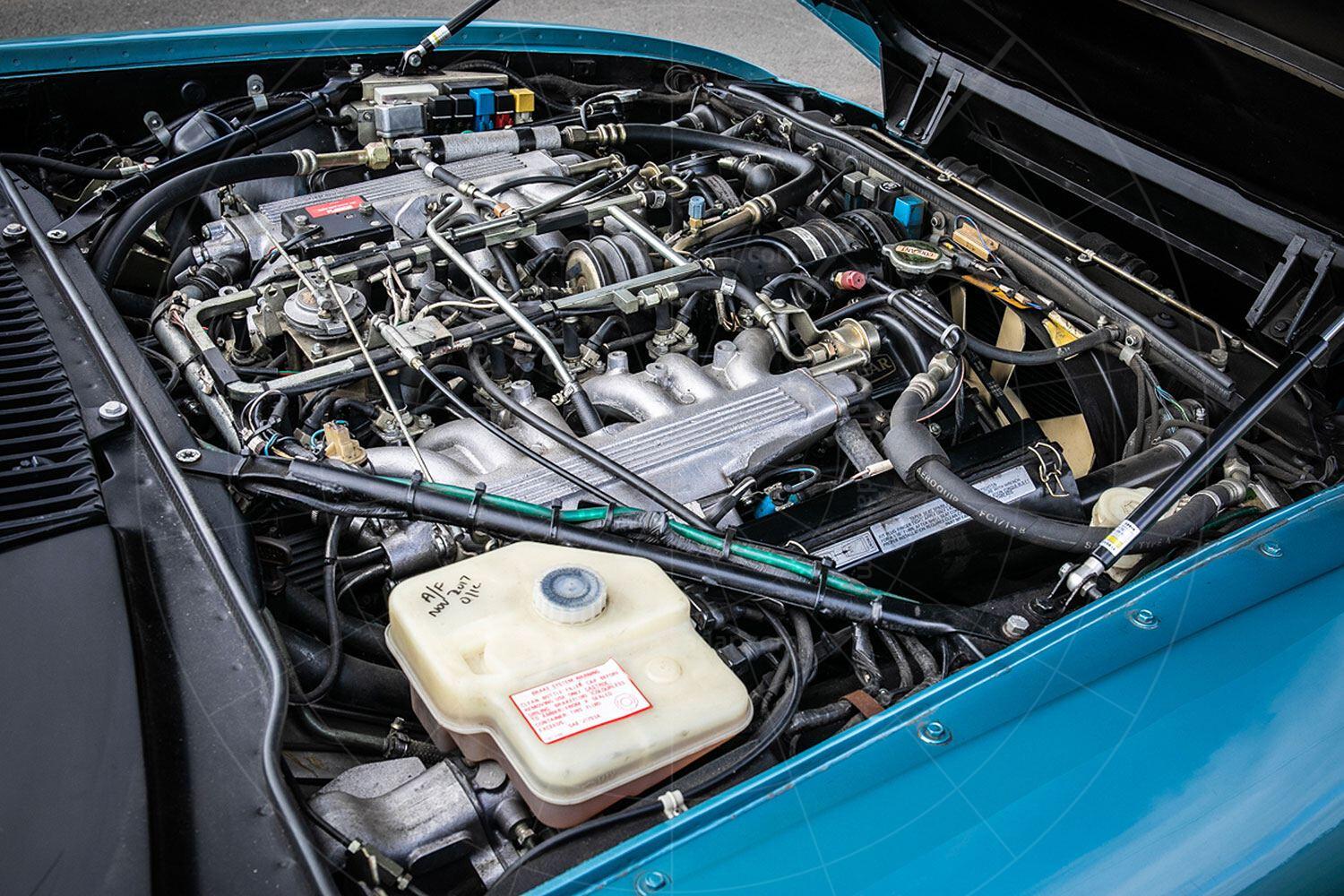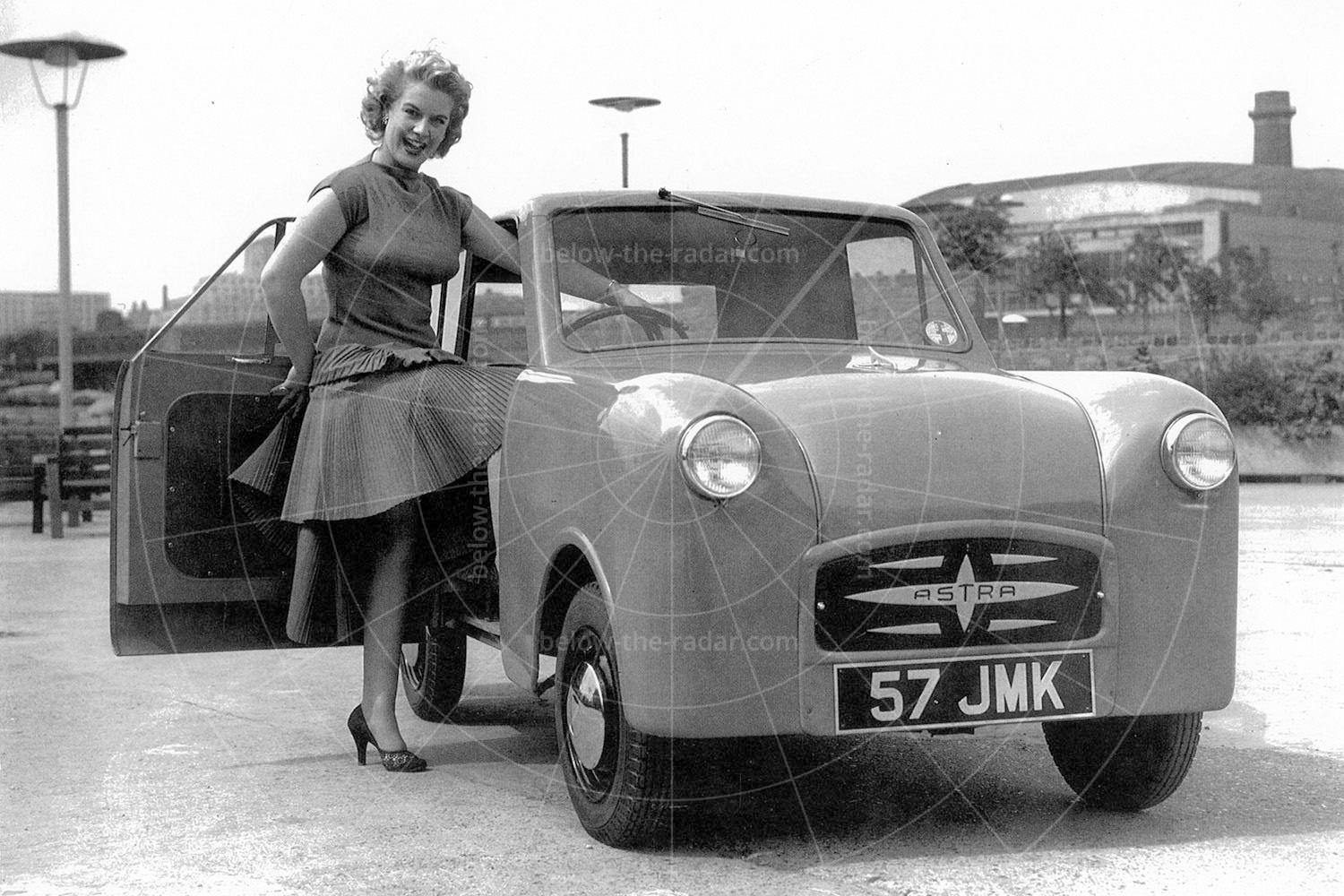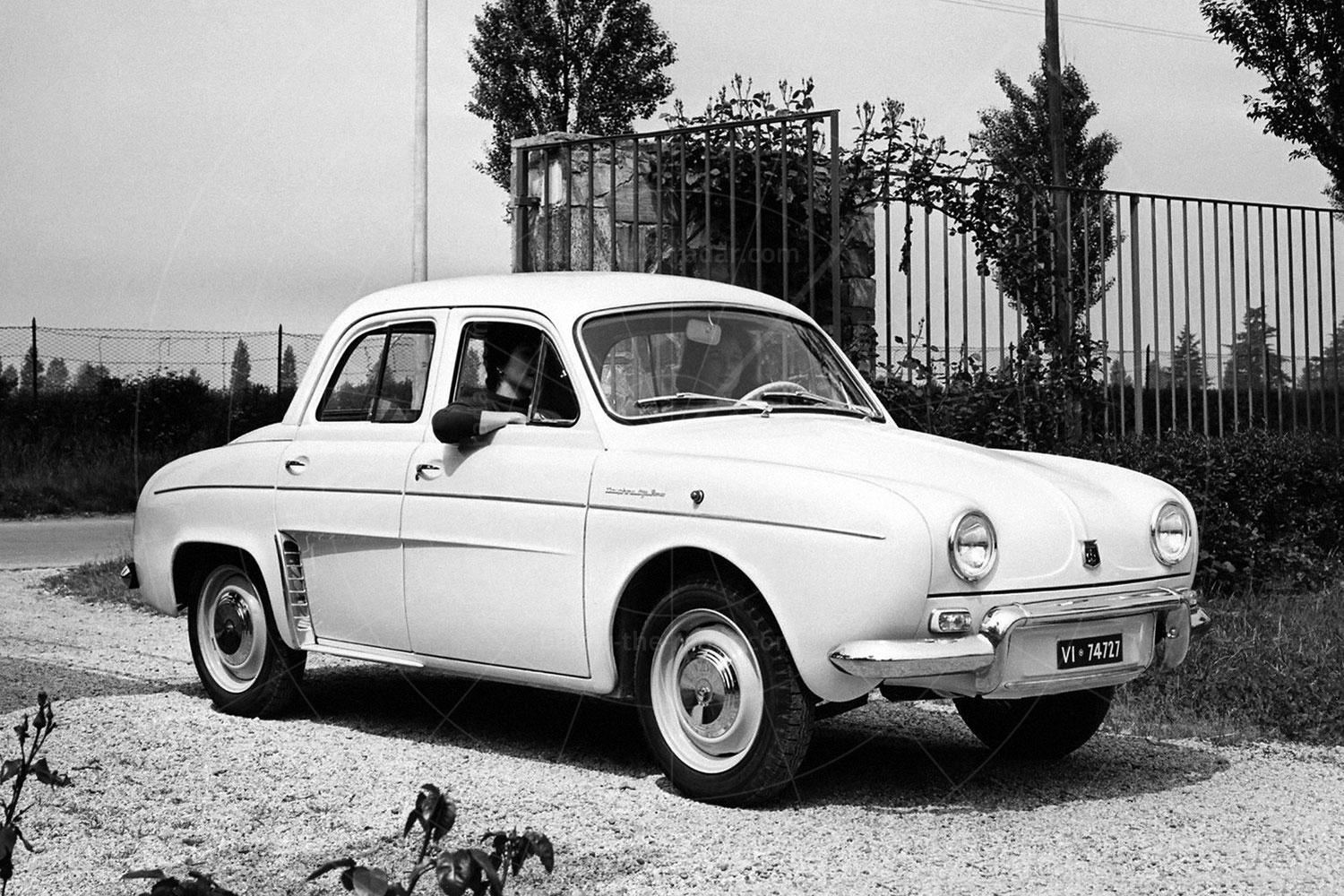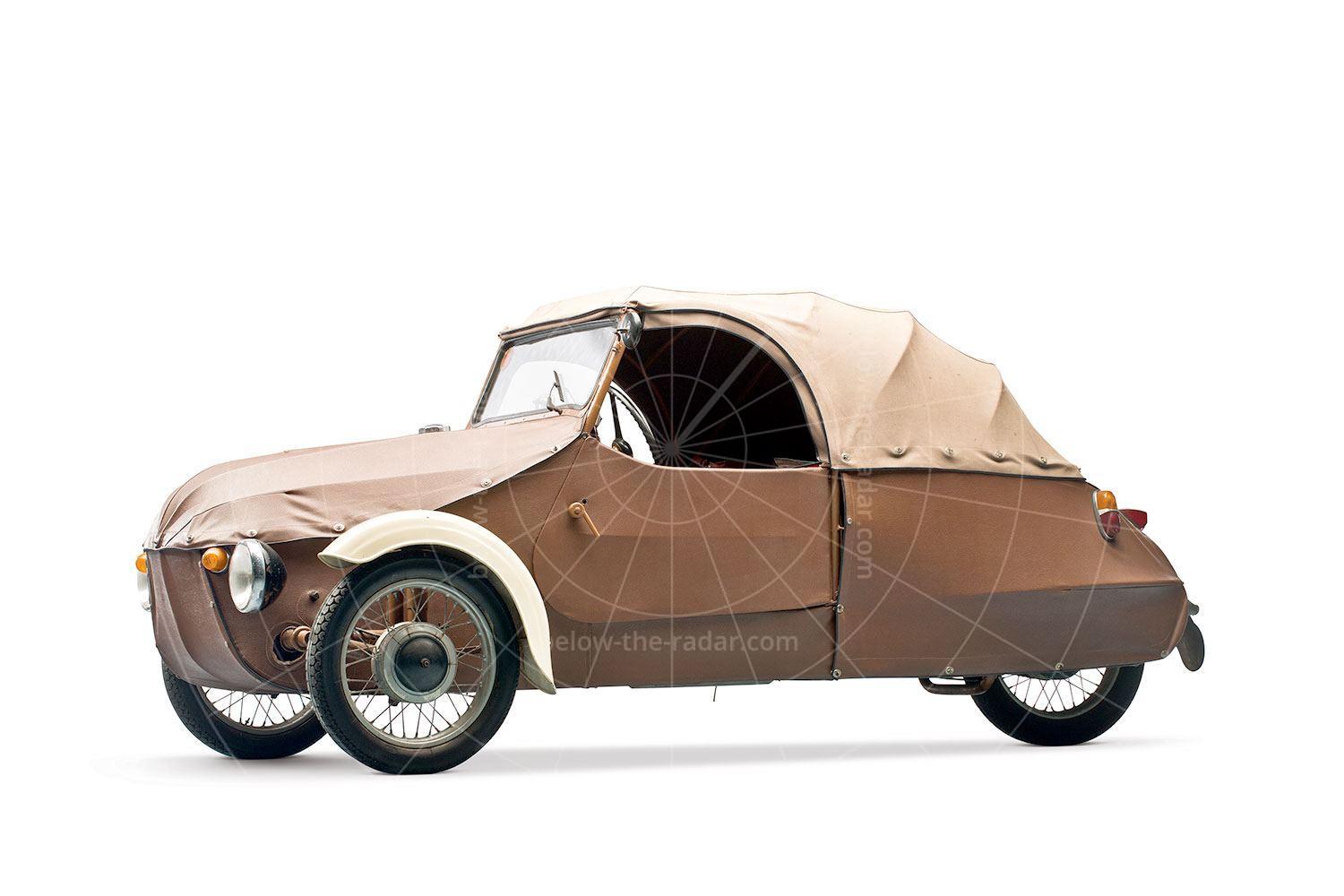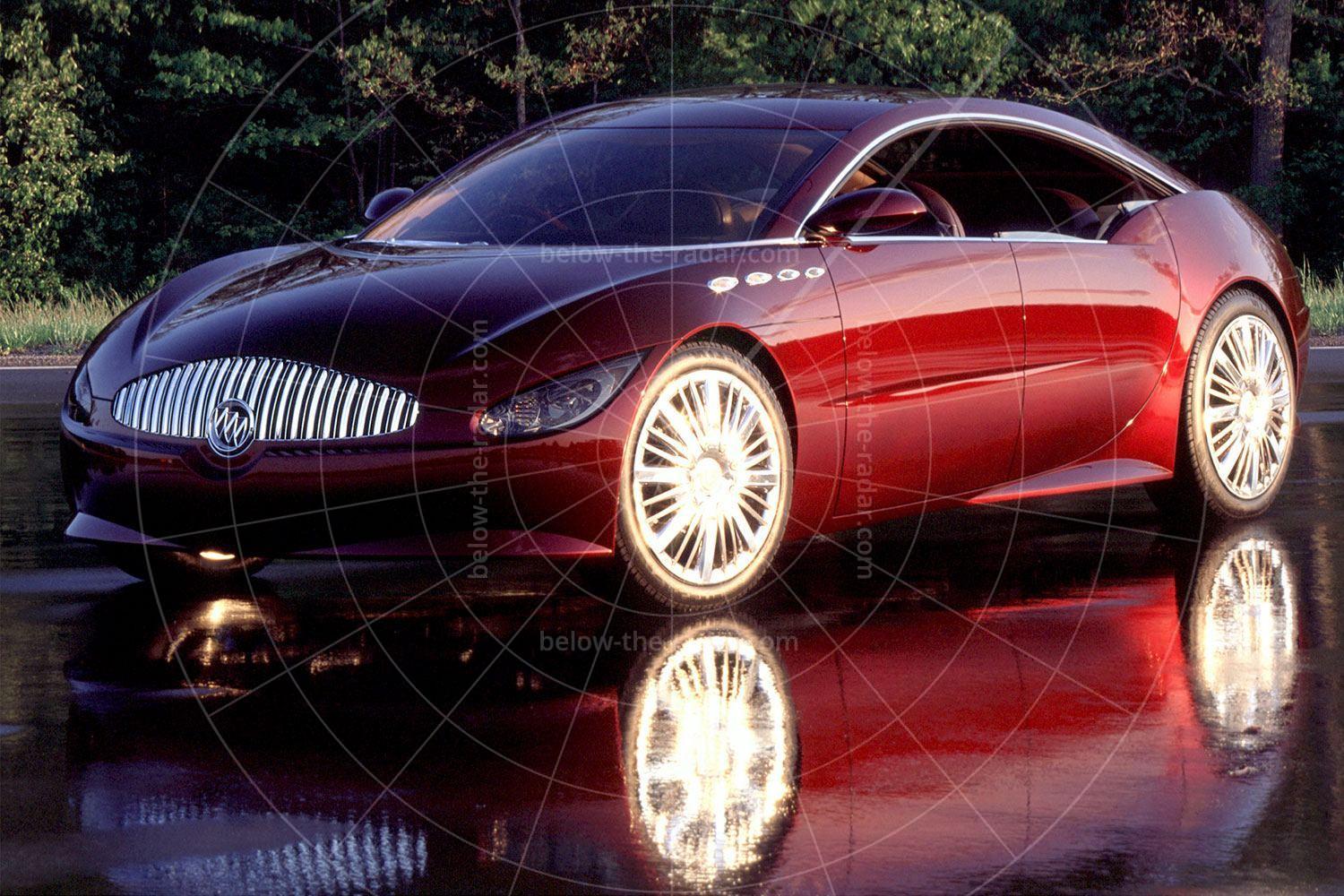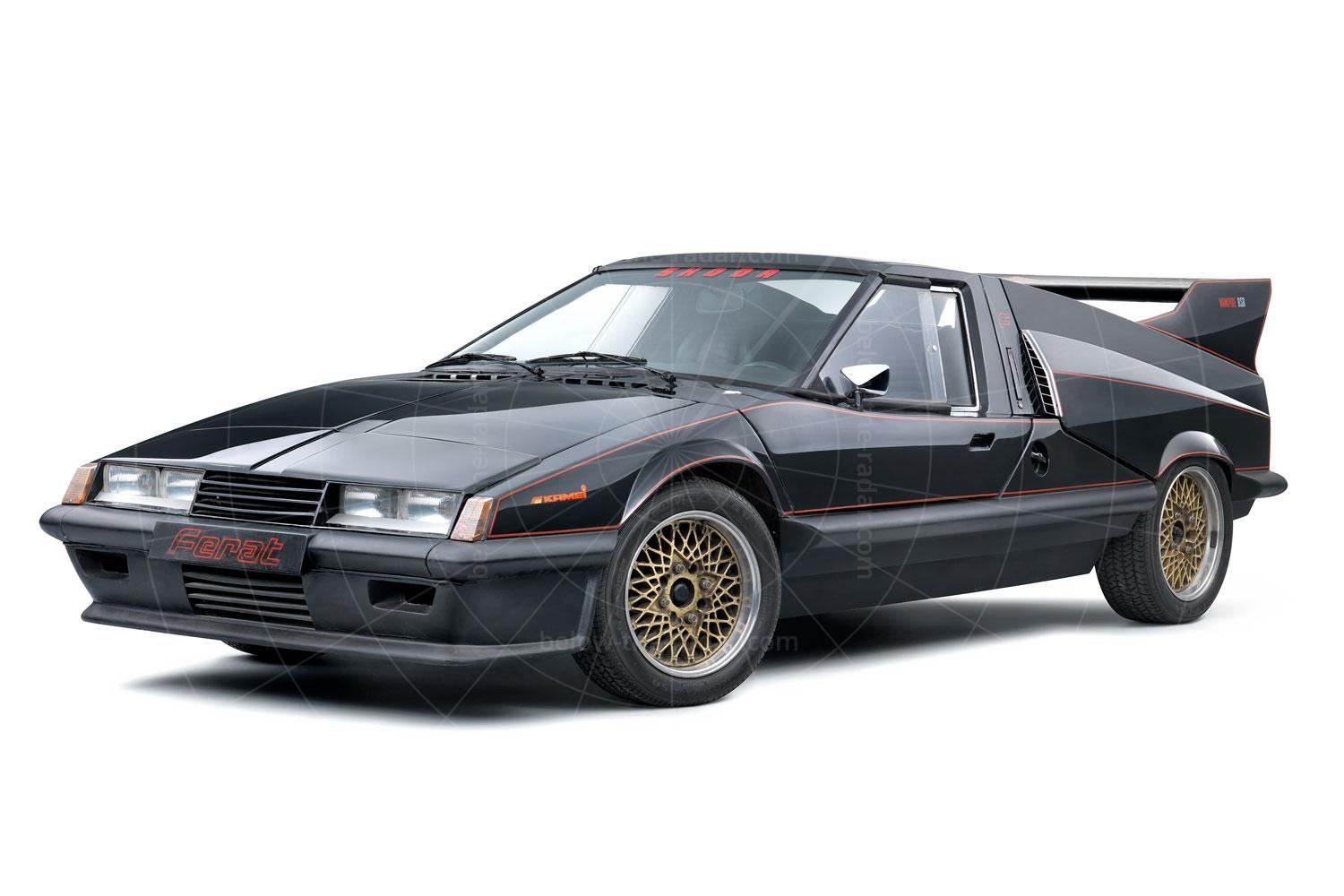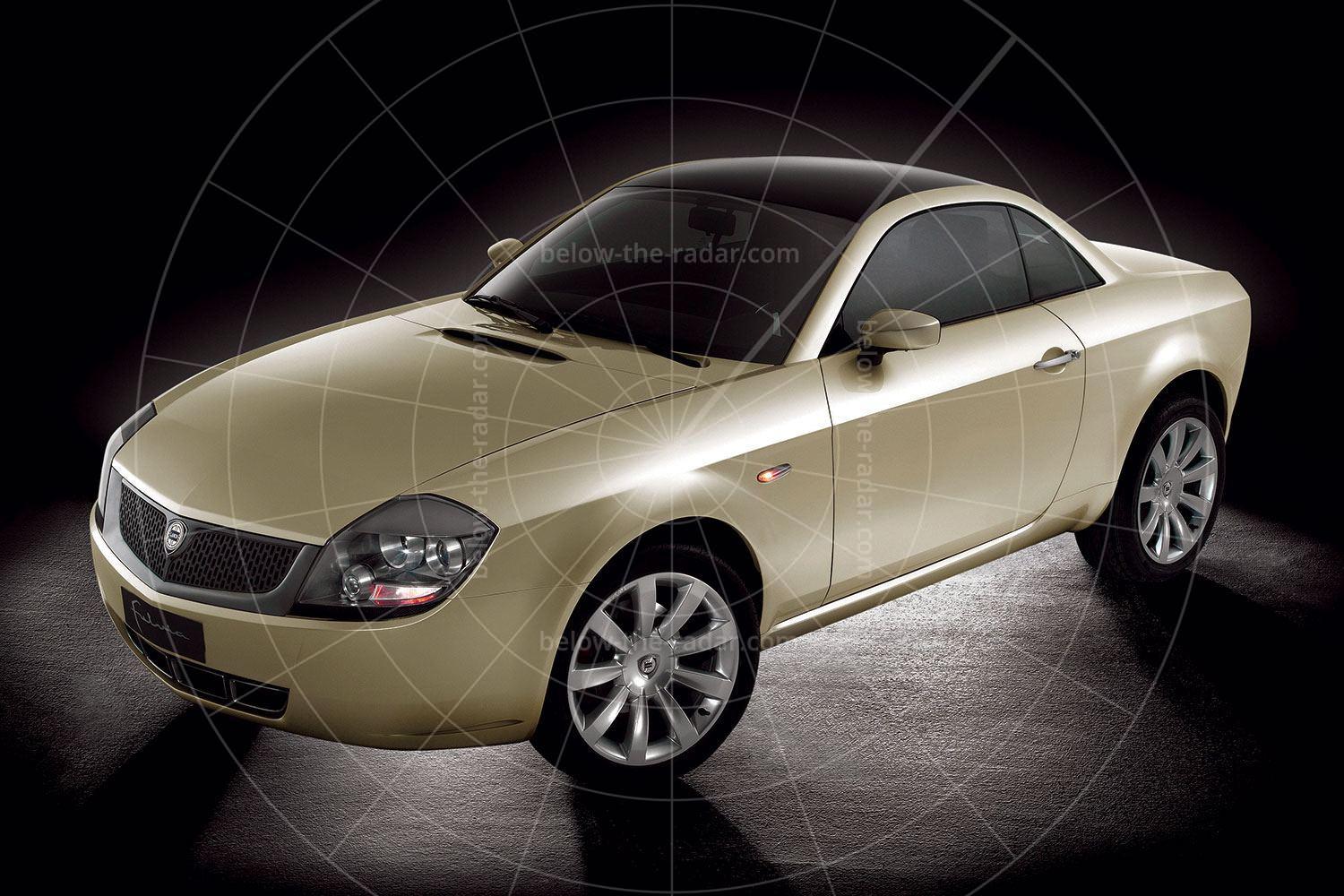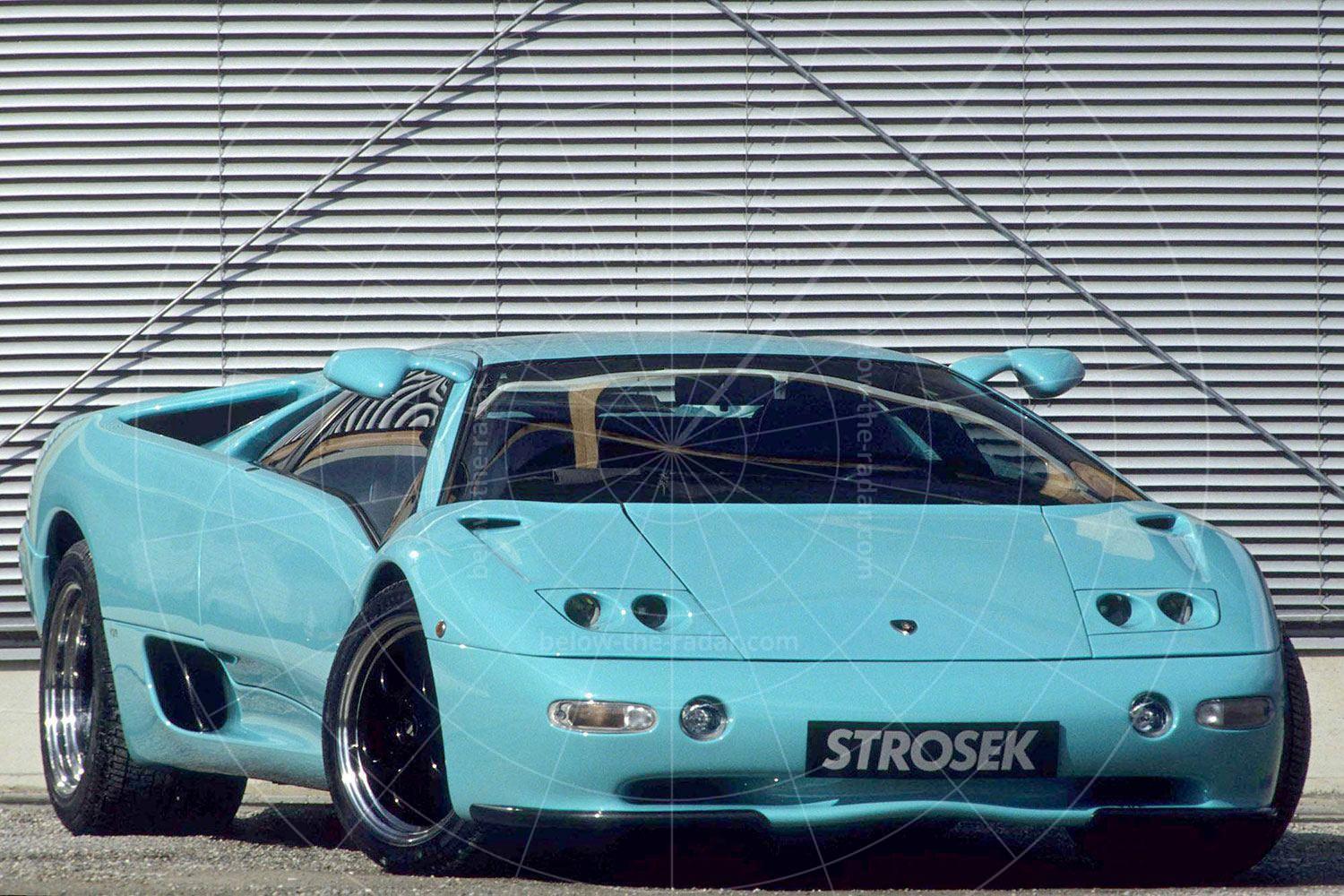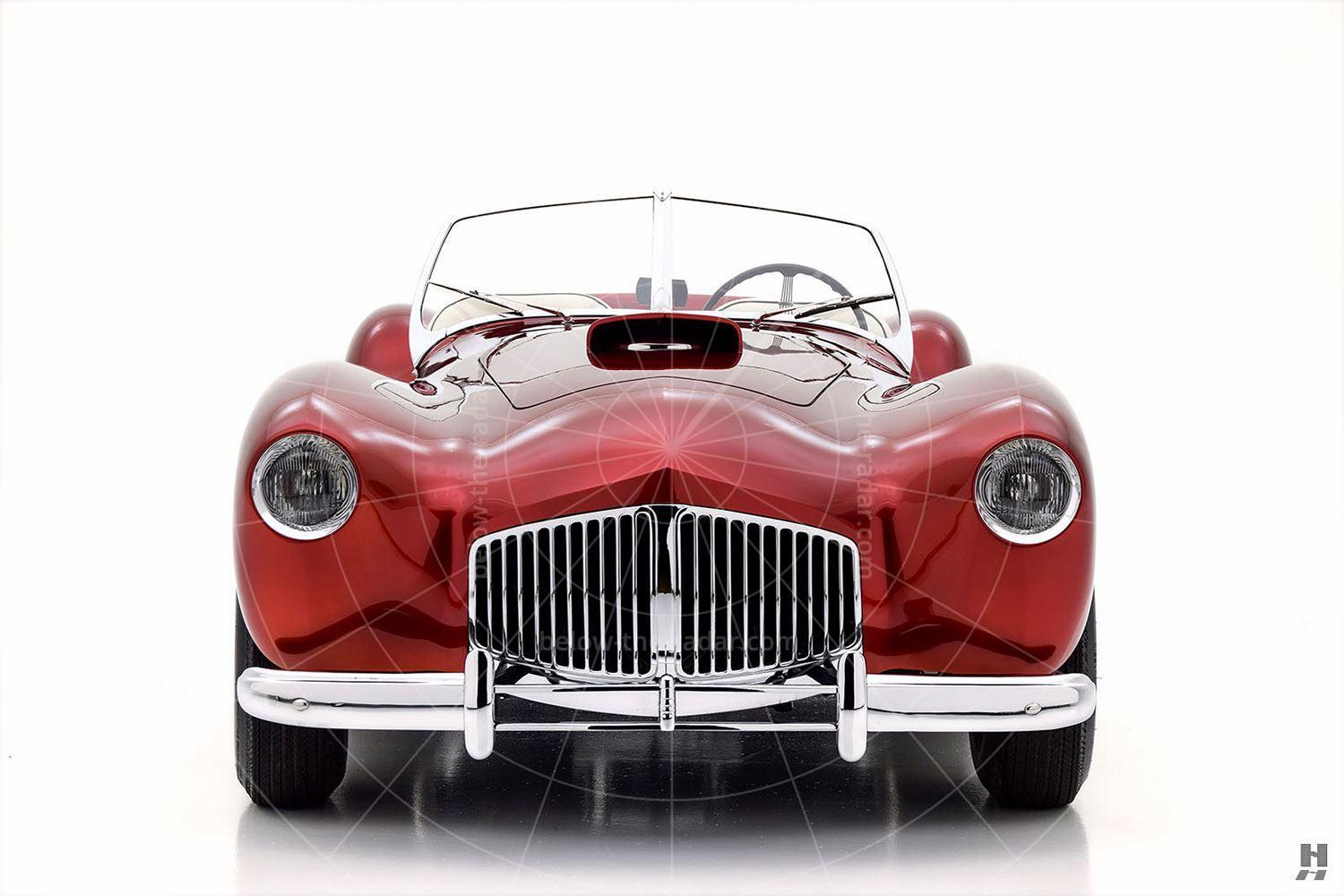William Towns is best known for the cars that he designed with a ruler, such as the Aston Martin Lagonda, the Jaguar E-Type-based Guyson E12 and the ultra-boxy Interstyl Hustler. But some of his cars did have curves, such as the Aston Martin DBS V8 – and these, the Railton F28 Fairmile (in red) and the F29 Claremont (in blue).
The Surrey-based Fairmile Engineering Company built Railtons between 1933 and 1939. They were high-quality cars and almost 1500 were prouced, but when war broke out in 1939 the company was wound down. An attempt was made to revive the brand in the post-war years, but the car that Railton was proposing to build was far too costly to succeed, so that was the end of that – until William Towns decided to bring the marque back from the dead in 1989.
William Towns had come up with a plan to rebody a Jaguar XJS as early as 1979, but the project didn't go anywhere until he had a conversation with Jaguar historian Philip Porter in 1987, in which the subject of a rebodied XJS came up. Porter expressed his disappointment with Jaguar's designs of the time, so Towns showed him the project that he had been working on.
At that stage the car was typically Towns with its angular design, so Porter suggested something more classical along the lines of the XJS-based 1978 Pininfarina XJ Spyder concept, upon which there was barely a straight line in sight. Towns came up with a new proposal but Porter wasn't convinced by it, so the pair went their separate ways. Instead Towns teamed up with businessman John Ranson in an attempt to make the venture work.
Now based in Warwickshire, Towns and Ranson set up the Railton Motor Company to build the F28 Fairmile and F29 Claremont, which were both based on the Jaguar XJS V12 convertible. Whereas the reclothed E-Type Guyson E12 featured glassfibre panels, the Fairmile and Claremont received an aluminium outer skin, in keeping with the cars' premium aspirations. This skin was produced by Coventry-based Park Sheet Metal, which also made the Jaguar XJ220 and Bentley Continental R bodyshells. Unfortunately such a method of construction meant a sky-high price of £88,775 when the two dropheads were unveiled at the 1989 Earl Court Motorfair in prototype form.
Pitched squarely against luxury grand tourers from the likes of Aston Martin (Virage) and Bristol (Britannia and Brigand), Towns described the two cars as "part Jaguar E-Type with overtones of the XK120". He also declared that "the Railton is the sort of car that Sir William Lyons would be building if he were alive today". Which strictly speaking his company was, as the Railton was simply a reskinned Jaguar…
Customers could tailor their car to their exact requirements, so while the Fairmile and Claremont were both convertibles, tin-top editions were possible, with the buttresses left intact or removed to create more of a regular notchback silhouette. Buyers could also modify the engines and transmissions however they wanted – as well as the rest of the running gear, such as the suspension. Buyers were also encouraged to have a bespoke interior made.
The differences between the Claremont and Fairmile were few and far between. Both received the same bodywork but the Claremont's rear spats had to be ditched on the Fairmile to accommodate wider rear wheels. The intention was that the Claremont was the cruiser while the Fairmile was more sporting. The prototype Fairmile was also fitted with conventional faired-in headlamps whereas the Claremont got more radical slitted lights.
By the time the 1989 Earl Court Motorfair closed its doors Railton claimed that it had received 25-30 serious enquiries at the show "and a lot more from all over Europe". Towns announced (rather optimistically) that no more than 25 cars would be built each year (one example of each model, per month) with production of each edition capped at 50. Even more optimistically, Towns hoped to get Type Approval to build the cars from scratch (whatever that actually meant), but at the end of 1989 all Fairmiles and Claremonts would have to be based on new XJSs.
When the Fairmile and Claremont made their Motorfair debuts in 1989, Towns made it clear that he really wanted to get Jaguar's blessing for his cars, presumably so that they could be sold via its dealerships, and serviced there too. Who knows – maybe he even hoped that Jaguar might honour the factory warranty too. After all, as presented in 1989 they were simply standard XJSs with an aluminium skin tacked on the top and all of the running gear, interior and electrics left intact. Unfortunately for Towns, Jaguar's response was that "it does not endorse such products".
Unfortunately, while the global economy was buoyant when the Railton prototypes were unveiled in October 1989, within months things had taken a turn for the worse and luxury cars were suddenly far harder to sell.
In August 1992 Performance Car tested William Towns' personal Claremont. This was almost three years after the car had first been shown at Earls Court, by which point the price had jumped to an even less palatable £105,000. The magazine reckoned the Claremont was beautifully made and effortless to drive, but they weren't sold on the car's "unhappy mix of retro and modern".
Unsurprisingly nobody placed an order for either car and by the time William Towns died in June 1993 just those first two prototypes had been built, with no customer orders received at all. By October 1994 the Railton rights and tooling had been sold to entrepreneur Graham Pierce. At the time he said: "When the dust settles and we have a better idea of the real costs, we'll set prices and volumes". But no further cars were made as the XJS couldn't be converted economically into the Fairmile and Claremont, so maybe buying those rights wasn't such a shrewd move after all.
Both cars survive and while the Fairmile has rarely been featured in any magazines, the Claremont has made occasional appearances in the press. At the end of 2020 this unique Railton was bought by serial car collector Rodger Dudding, who created the 460-strong Studio434 collection in Hertfordshire. Dudding is a confirmed fan of William Towns' work as he also owns two dozen Lagondas and a pair of Hustlers, so the fact that he now also owns the very last car designed by Towns before he died at the untimely age of 56 is perhaps the most fitting tribute of all, to one of the most creative and prolific car designers ever.
| Vital statistics | |
|---|---|
| Engine | Front-mounted, 5343cc, V12 |
| Transmission | 3-speed auto, rear-wheel drive |
| Power | 300bhp at 5500rpm |
| Torque | 318lb ft at 3000rpm |
| Top speed | 150mph approx |
| 0-60mph | 7.2 seconds |
| Price | £88,775 (at launch) |

